Tim Grover: There is no offseason

As the NFL season opens, you can go through every roster and point to the “You Gotta Be Kidding Me” injuries: Hamstring issues, quad strains, calf strains, groin pulls… you gotta be kidding me. The NFL season ended last January, you had five months before training camp in July. What were you doing? If you trained efficiently and effectively, there’s not a reason in the world you should be dealing with a calf strain or sore hamstring. Unless you took the offseason off.
At the end of every sports season, there should be a sign over the locker room door for every player to see as he or she exits:
OFFSEASON DOESN’T MEAN TAKE THE SEASON OFF. IT MEANS YOU’RE OFF ON YOUR OWN UNTIL NEXT SEASON.
There is no offseason.
If you’re serious about winning, if you care about your body, if you’re committed to being ready and available for your team, you have to be willing to work year-round. Not just because you’re told to, or because you’re paid to, but because you want those results so intensely that the work becomes irrelevant.
Plain and simple: The offseason prepares you for training camp. Training camp prepares you for the preseason. The preseason prepares you for the season. If you skip any one of those stages, there’s a good chance you won’t have to worry about the season; you’ll be on the bench. No matter how talented you are, if you’re not healthy or available, you can’t help your team. Now you’re already behind…because someone else outworked you and took your spot.
Tim Grover: For the NBA, it shouldn't happen in Vegas
I know, everyone “works out.” But there’s a big difference between working out, and training like a pro. If you play in a helmet and pads, why aren't you spending some offseason time training in a helmet and pads? Why wait for training camp? Everything about your motion and balance and weight distribution changes when you put on the equipment. So first we’ll work at your own body weight, then body weight plus three pounds, body weight plus seven, plus 15 … so your joints and muscles and central nervous system are conditioned for the stress and impact they experience in game conditions. If you limit your offseason program to lifting and cardio, and you’re not conditioning your body to play with the extra bulk and weight and restriction of equipment, you can’t be surprised when you get to training camp and go down with a You Gotta Be Kidding Me. Or a torn ACL.
Football players have an extra offseason challenge, because it’s extremely hard to simulate the intensity of explosive physical impact. But find some way to use your body that prepares it for what’s ahead. Strike something and let it strike you: Boxing, wrestling, tumbling, diving … anything that creates impact. If the last hit you took was in January, you will not be ready for that first hit in July.
I’m not just picking on football players here; this is true for every sport. I can guarantee that around the first week of October, just as NBA training camps open, I’ll get half a dozen calls from players (or their frantic agents and GMs) who—oops!—just realized they forgot to train for the season. And it’s never the guys who just wrapped up the Finals in late June; they know what’s at stake and they typically keep working. It’s usually a handful of players whose season ended mid-April without a trip to the playoffs, and who still don’t understand why. Hint: What you do in the offseason is a pretty good indication of whether you’ll have a post-season.
If you want a great example of how being unprepared leads to injury, go back to the shortened 2011-12 NBA season that opened two months late because of a labor dispute. When the standoff finally ended, the league rushed back to work with limited workouts and practice, an abrupt preseason, and a condensed schedule that led to fewer days off and less time for rest and recovery. The consequences were immediately obvious: many guys were out of shape, poorly conditioned, unprepared to play ... and inevitably, numerous players suffered serious injuries. Everyone pointed to the same cause: There had been no time to get ready.
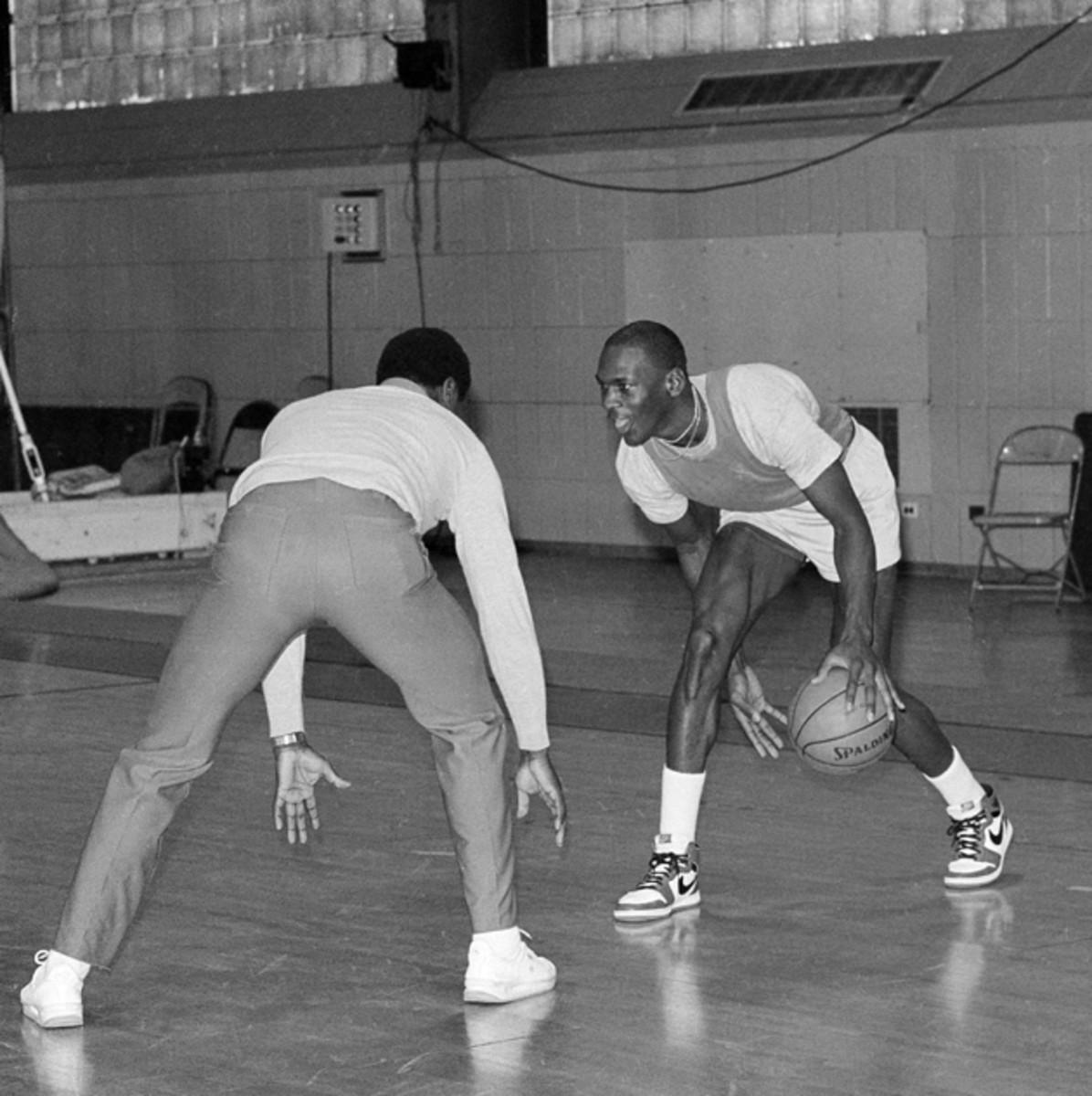
No time to get ready? There was nothing but time to get ready. I wrote about this in my book Relentless, and I’m writing it here again, because it underscores everything I believe in: All those months, waiting for the lockout to end—what else did the players have to do? When you’re a professional athlete, you have one job: Take care of yourself and your skills, get in shape and stay that way. Your body is your career. What difference does it make when the season is starting? A longer offseason should have meant more time to prepare, not less. Instead, we had some of the world’s greatest athletes putting in as much as effort as the guys at the local health club, waiting for someone to announce it was time to do the real work. For those who waited, it was too late to get in shape for the rigors of the season.
But you never hear players say they weren’t in shape. What’s the most common explanation for any injury that doesn’t have an obvious cause? It just happened. Freak accident.
Nope. There is no such thing as a freak accident in sports. Nothing “just happens.” If you traced every step backwards from the moment of the injury, examining what happened that day, that week, even the months before—you’ll find the cause. Overtraining, undertraining, fatigue, weakness, flawed mechanics, drinking, smoking, poor preparation, inadequate equipment, behind-the-scenes drama, fear. There is some unseen detail that allowed the injury to occur. True for you and true for the superstars; my clients are no exception. Wade’s knee, Kobe’s Achilles … there’s always a reason, even if you have to search back to the beginning of the career to find it. It’s not about pointing fingers or creating blame; it’s about resolving the issue and doing everything possible to make sure it doesn’t worsen or repeat.
I can’t accept an injury being written off as “one of those things.” One of what things? How did it happen? Why? What could we have done to prevent it? I’ll examine game film for hours looking for clues. You tell me you felt something unusual during a game or practice—I have to know where it started. Because the next time you feel it, we might be too late to do anything about it. And you’d better believe we’ll spend a good portion of the offseason preparing your body to minimize the chance of it happening again.
Kobe Bryant on growing old, players he respects and finding his inner Zen
It shouldn’t surprise you that the greatest athletes are those who are always working at being even greater, even when their abilities already exceed everyone else’s. No one understood this better than Michael Jordan: His season would end with the Finals in late June, and he’d spend July and August focused on how he could improve his game, what he could add, refining his goals. Even when he was resting his body, his mental training never stopped. And when he was ready to get back to the gym, everything else stopped; all his sponsor commitments and international travel were finished by the end of August, because by Labor Day, he shut down everything else in order to focus on the upcoming season. Our day: Workout, breakfast, golf, lunch, workout, golf, dinner, sleep. Every day. No offseason. When training camp opened in October, he was already prepared for the regular season in November, while most players were still trying to pass their team’s conditioning tests.
Look, I’m not telling players they have to train 365 days a year; everyone needs time to rest, to relax, to have a life. It’s not about the offseason hours you put in, it’s what you do with those hours—not just working, but working efficiently. How you train must translate into how you compete; every exercise should have a specific purpose. If you can’t find the link between your work in the gym and your game-time performance, if you’re spending more time training on a ball or a mat than on your feet, it’s time to reevaluate your program. You play on two feet, you should train on two feet. Are your exercises for show or for go? Is your trainer trying to impress you with creative trendy gimmicks, or giving you a program the delivers results? Everyone talks about training at “game speed,” meaning practicing at 100% speed all the time. But actual game speed isn’t 100%; games are played at high intensity, low intensity, and no intensity. If you play at different speeds, then train at different speeds.
MJ used to say practicing hard made the game easier. No question: The harder the offseason, the easier the season. Anyone can get intense under the bright lights; it takes a true competitor to get intense about offseason workouts. You don’t have to love the effort. Just crave the results, and the effort becomes effortless.
Tim S. Grover is the CEO of ATTACK Athletics, world-renowned for his work with championship and Hall of Fame athletes. An international authority on sports performance and motivation, he trains elite athletes around the world, appears as a keynote speaker for corporations and sports organizations, and is the best-selling author of Relentless: From Good to Great to Unstoppable and Jump Attack. Follow Tim @ATTACKATHLETICSon Twitter, and visit www.attackathletics.com for more.
Training Day: Basketball Through the Years
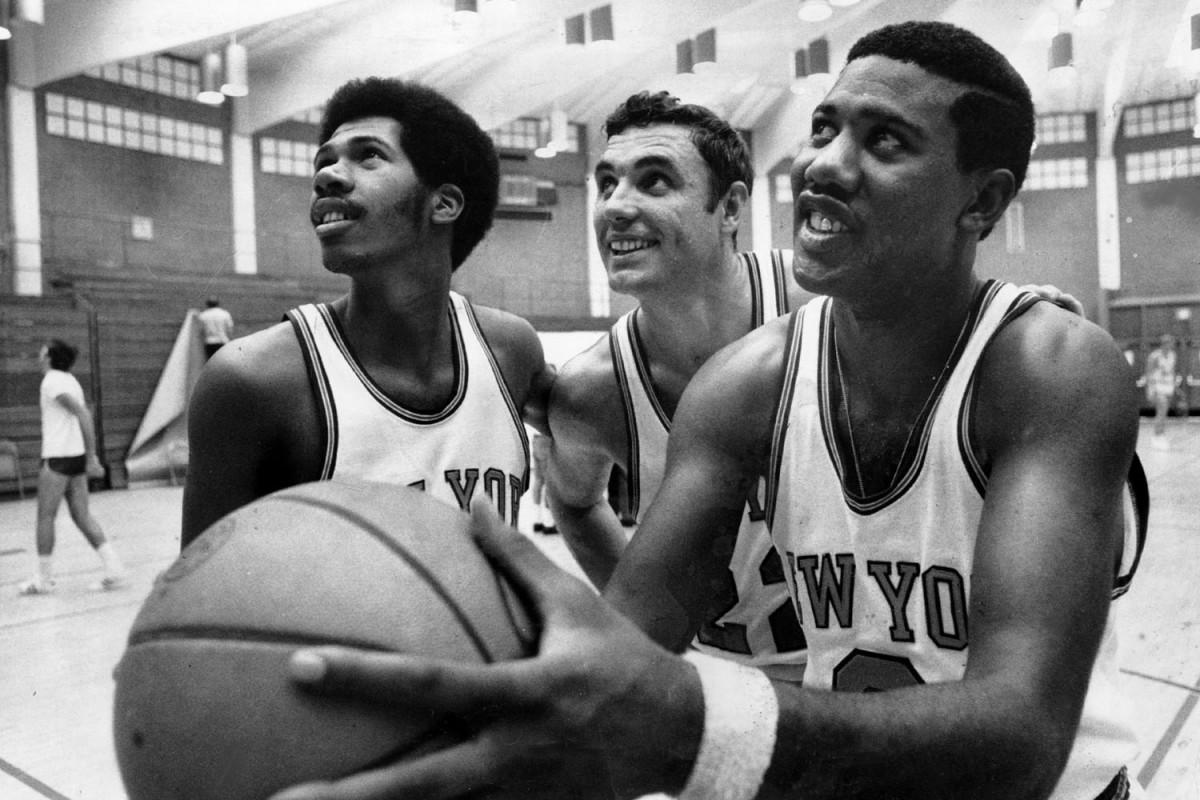
New York Knicks' John Warren and Dave DeBusschere watch Dave Stallworth get ready to shoot at the team's training camp in Farmingdale, Long Island.
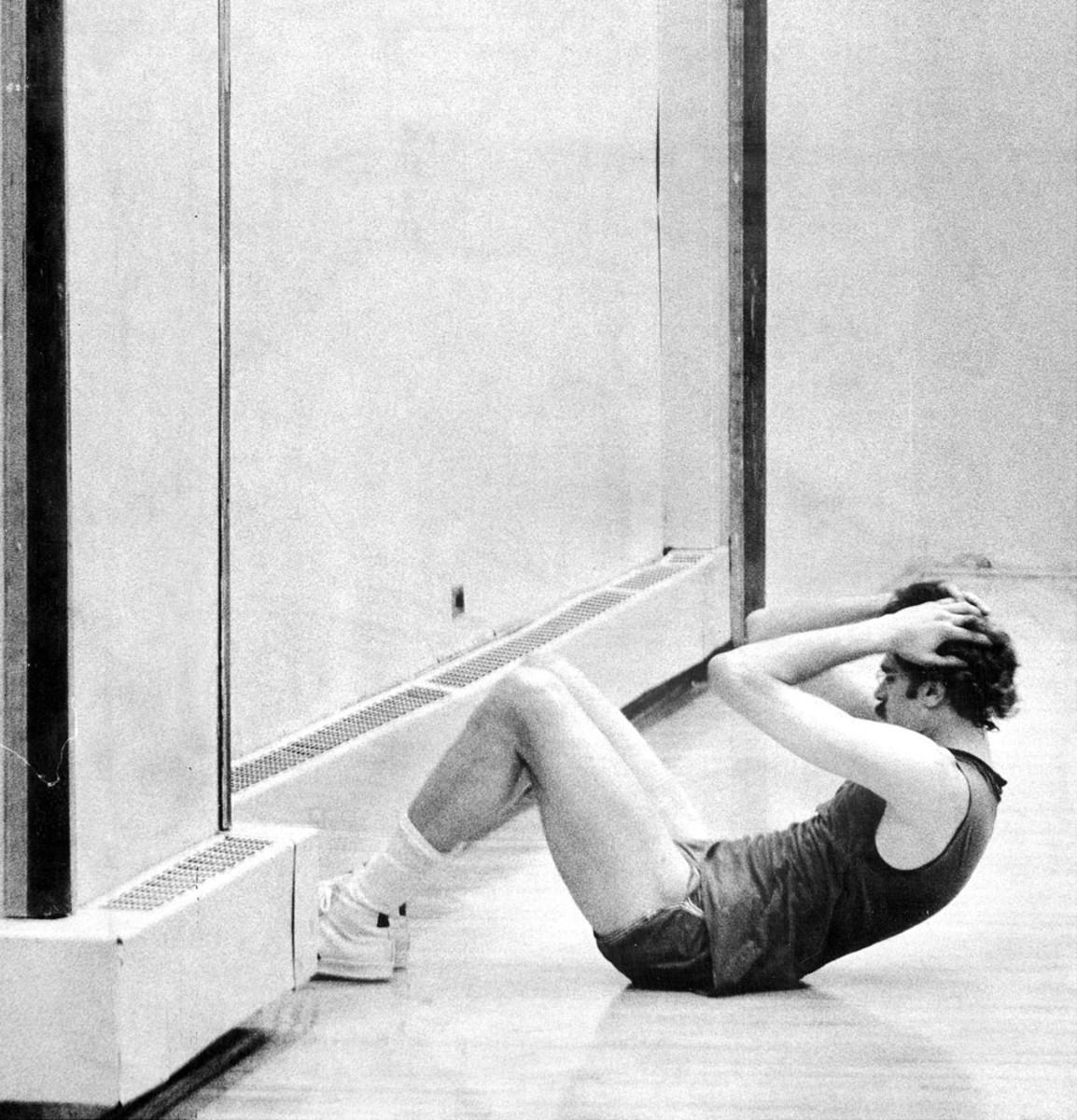
Knicks' Phil Jackson does situps after a practice session at Pace College.
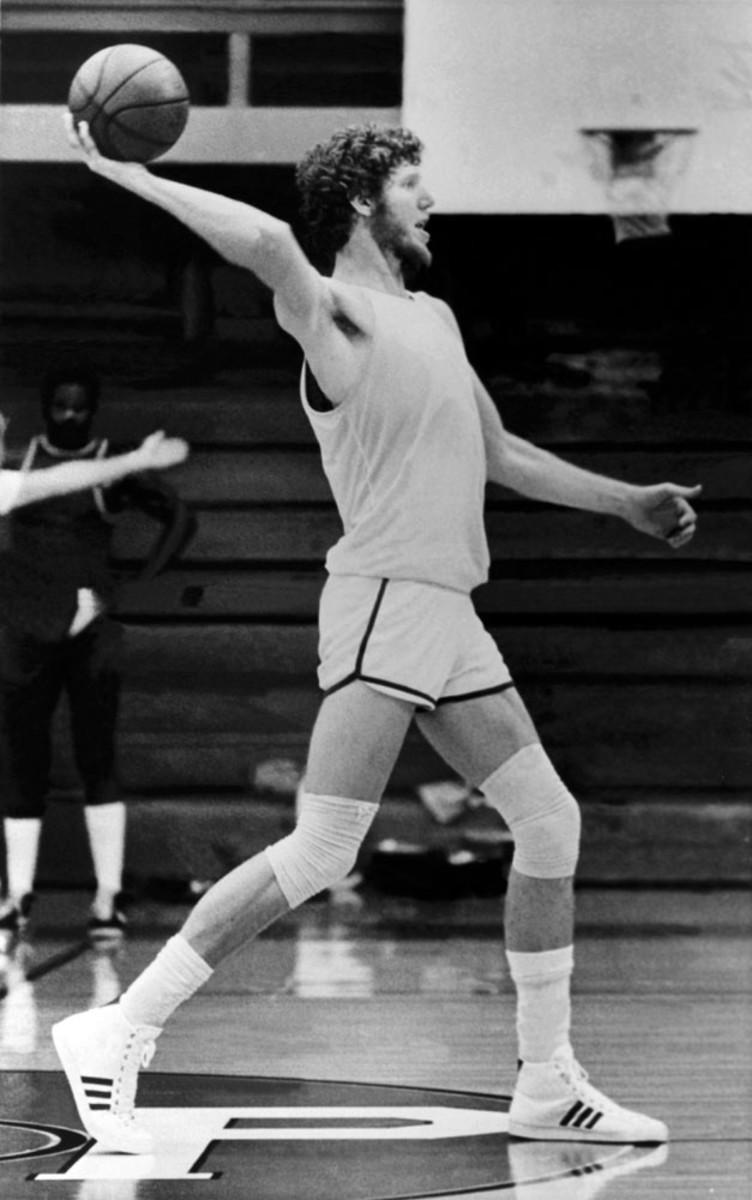
Bill Walton throws a long pass during a practice session at the Memorial Coliseum circa 1978 in Portland, Oregon.
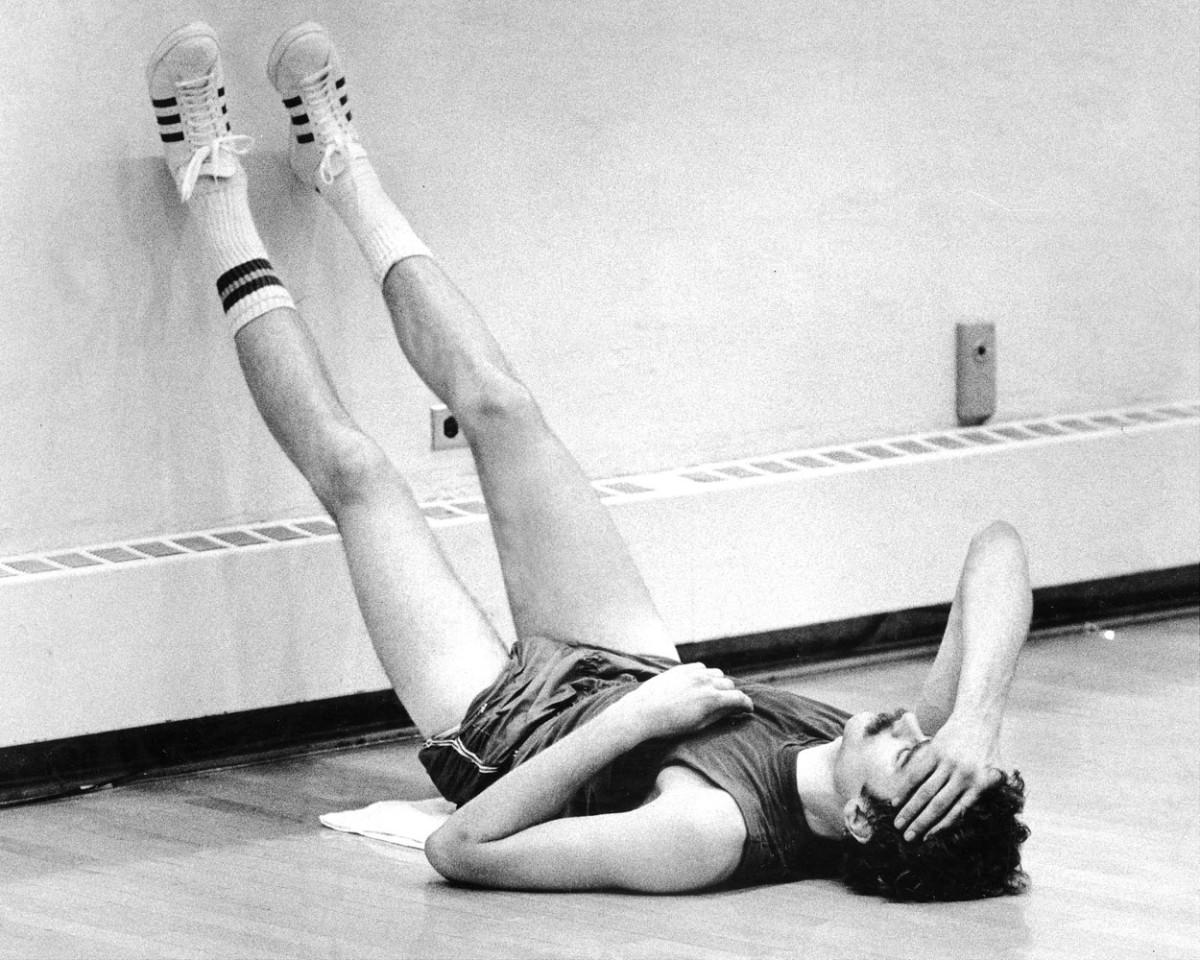
Knicks' Phil Jackson drained from doing situps after a practice session at Pace College.
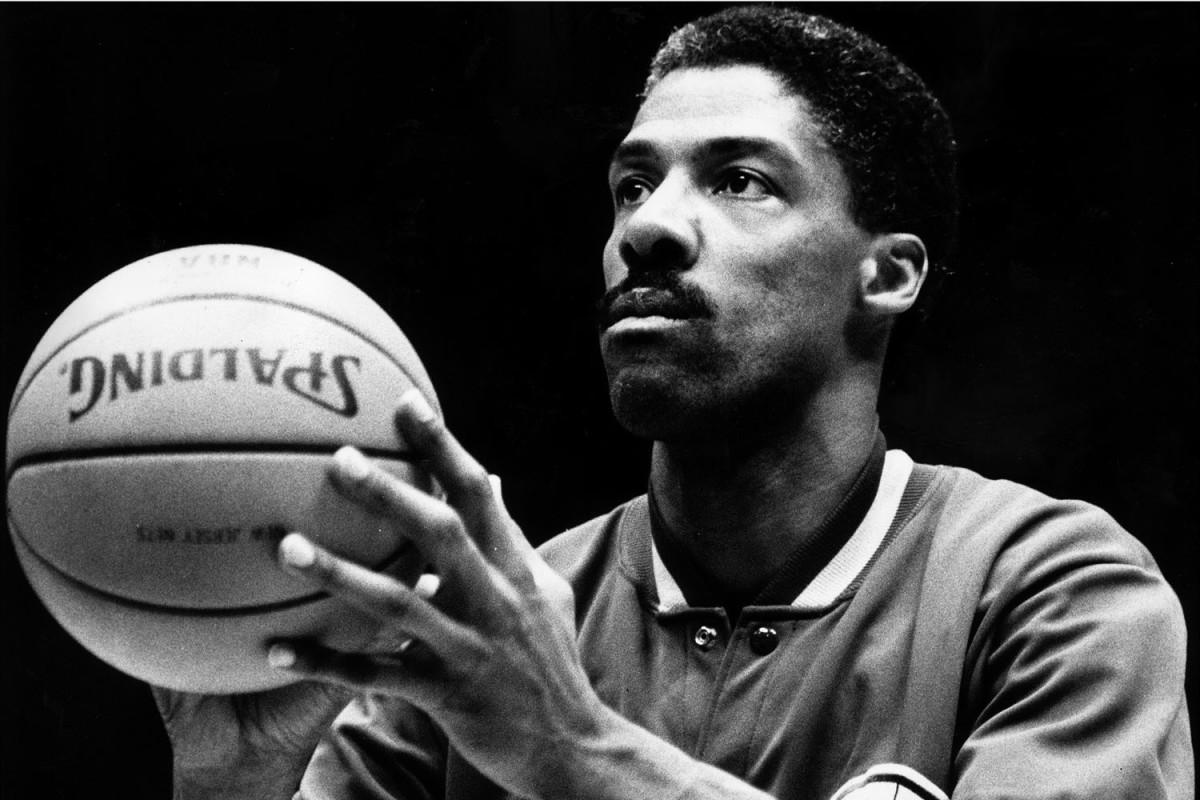
Philadelphia 76ers Julius Erving concentrates on his shooting as he warms up before a Nets game.
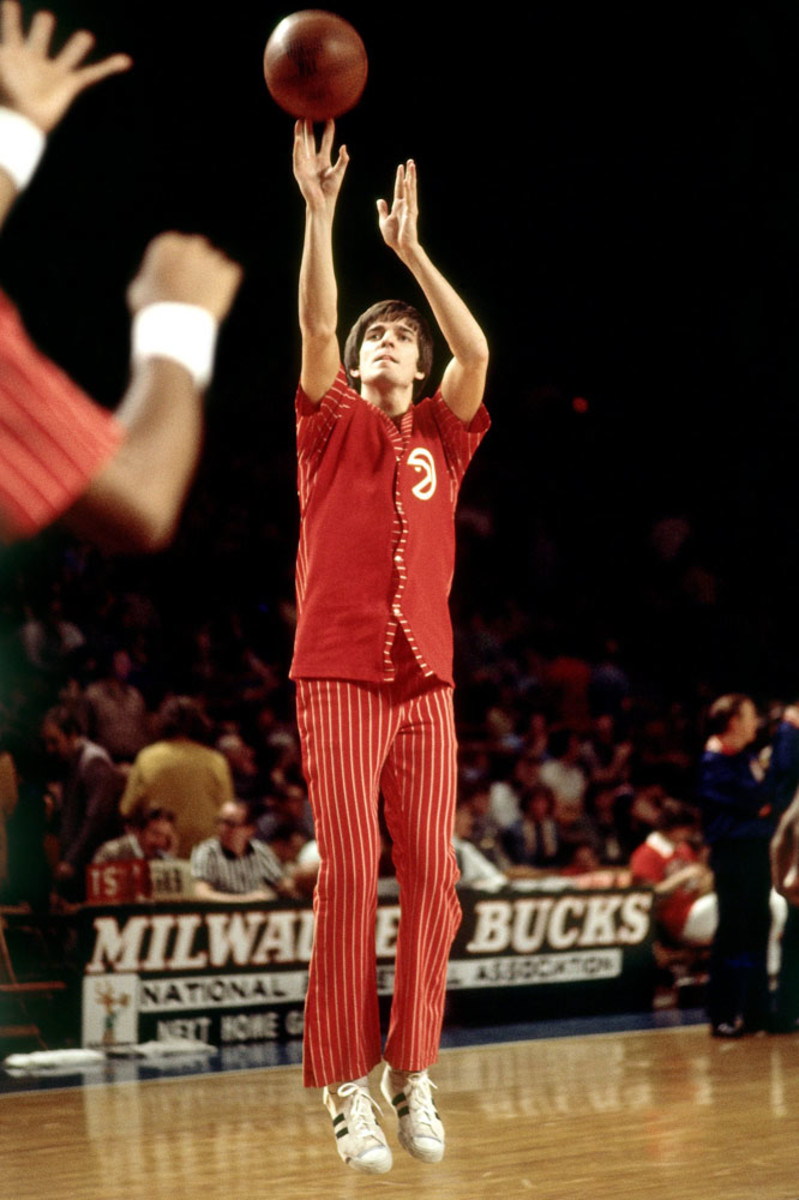
Pete Maravich shoots during warm-ups prior to a game against the Milwaukee Bucks in the 1973 season at the MECCA Arena in Milwaukee, Wisconsin.
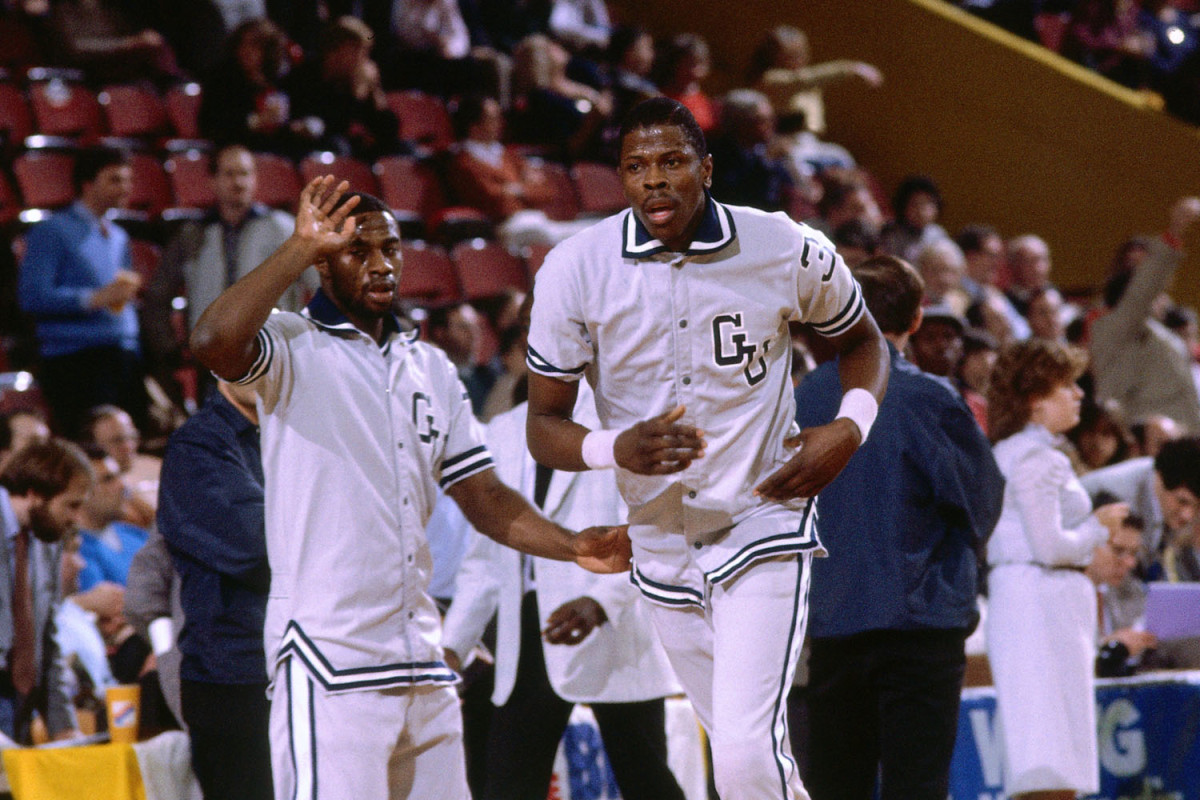
Patrick Ewing of Georgetown University walks on the court during warm-ups prior to NCAA game played in 1983 at the Boston Garden in Boston, Massachusetts.
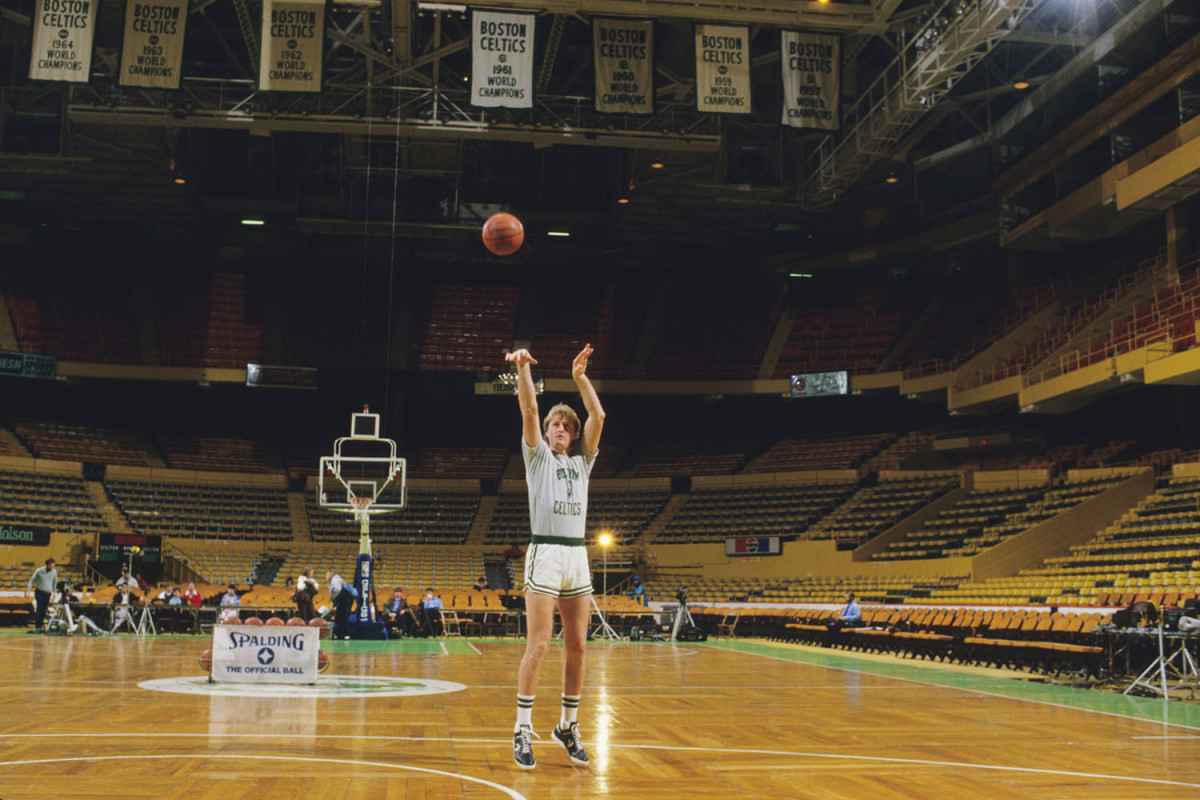
Larry Bird practices before a game on January 22, 1986 in Boston.
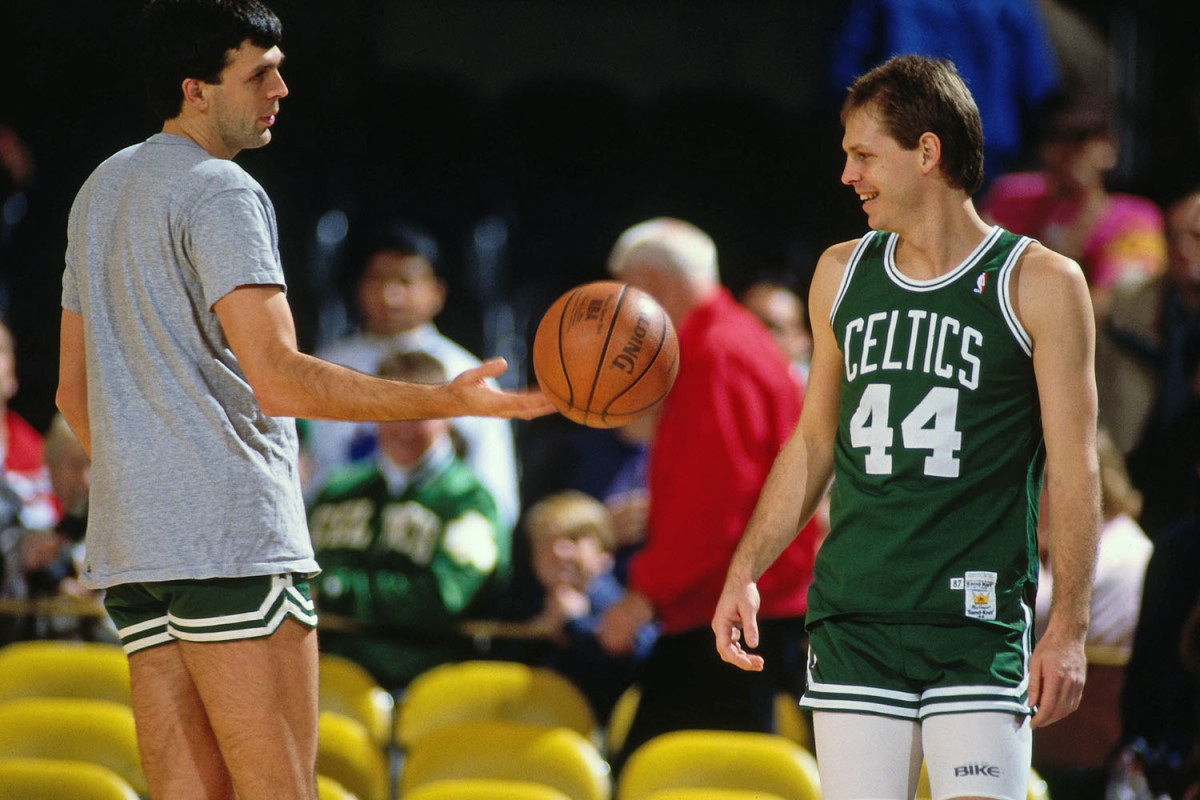
Kevin McHale and Danny Ainge warm up prior to a game against the Los Angeles Lakers circa 1987 at the Great Western Forum in Inglewood, California.
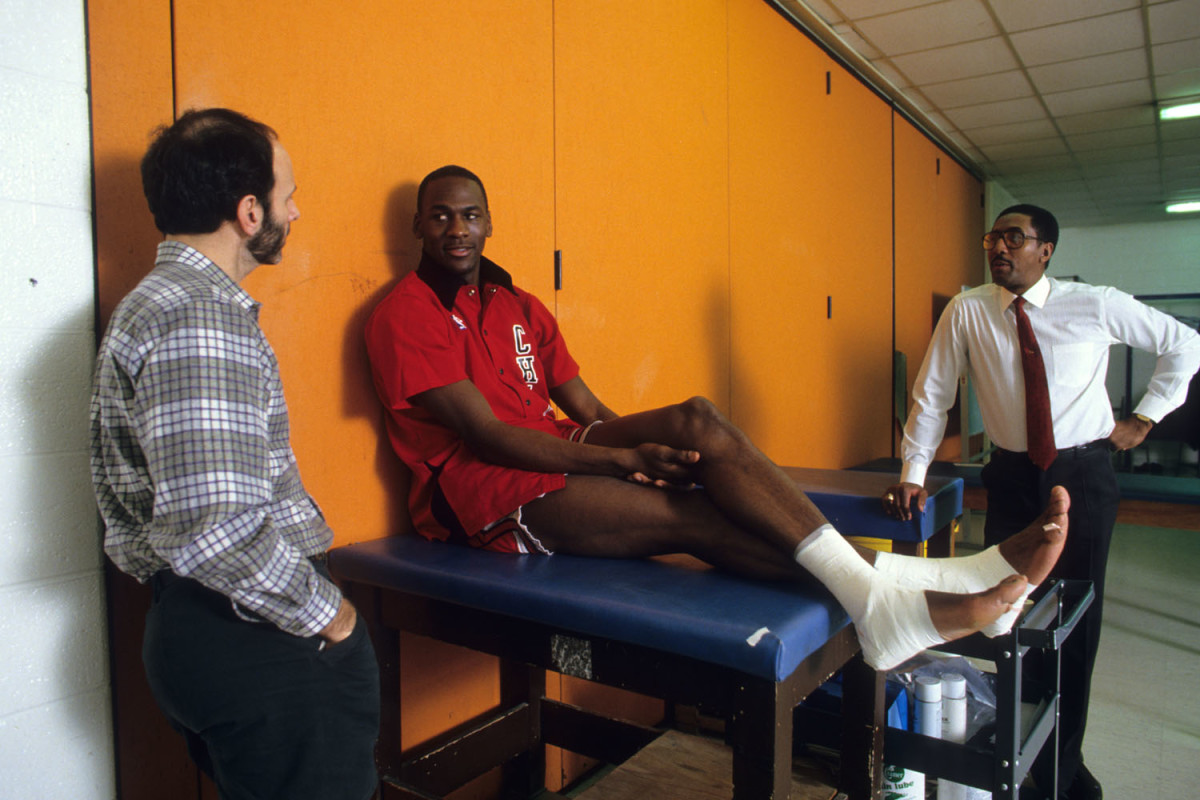
Chicago Bulls guard Michael Jordan on the trainer's table before a game against the Detroit Pistons at the Pontiac Silverdome in 1987.
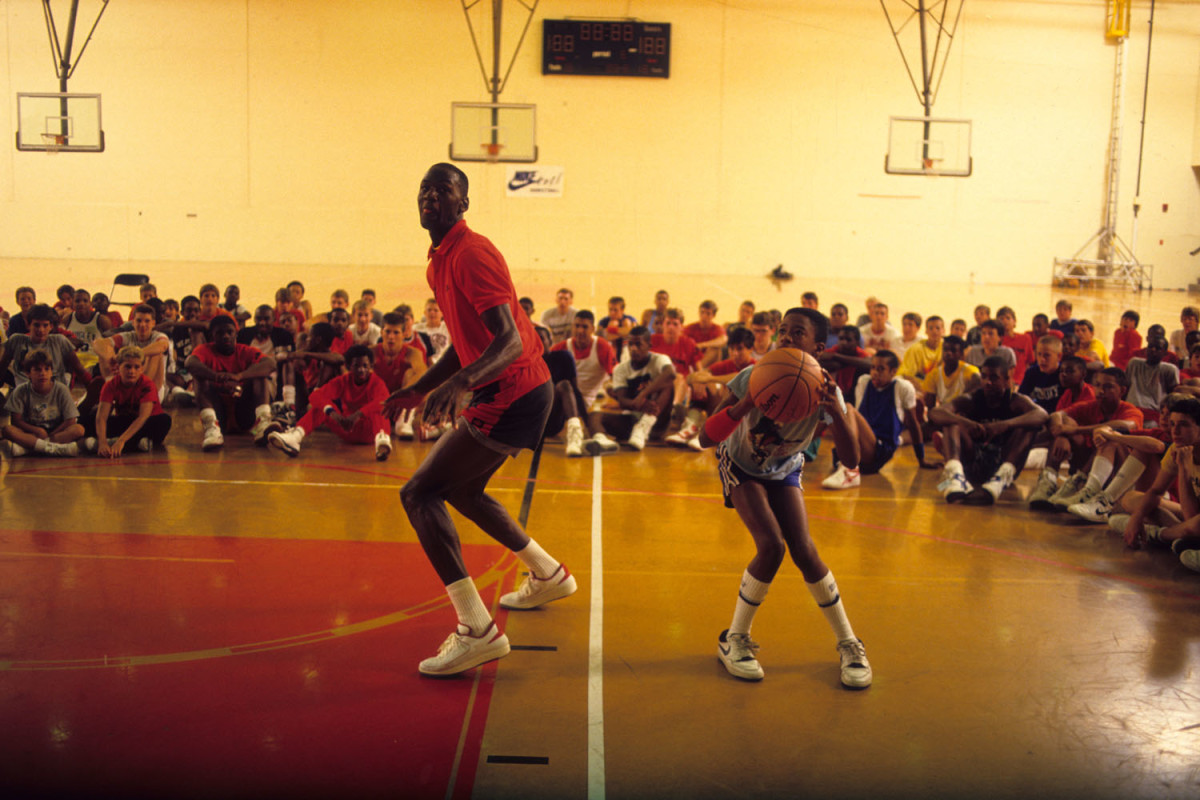
Michael Jordan playing one-on-one against a young basketball player during a basketball camp session at Illinois Benedictine College in 1987.
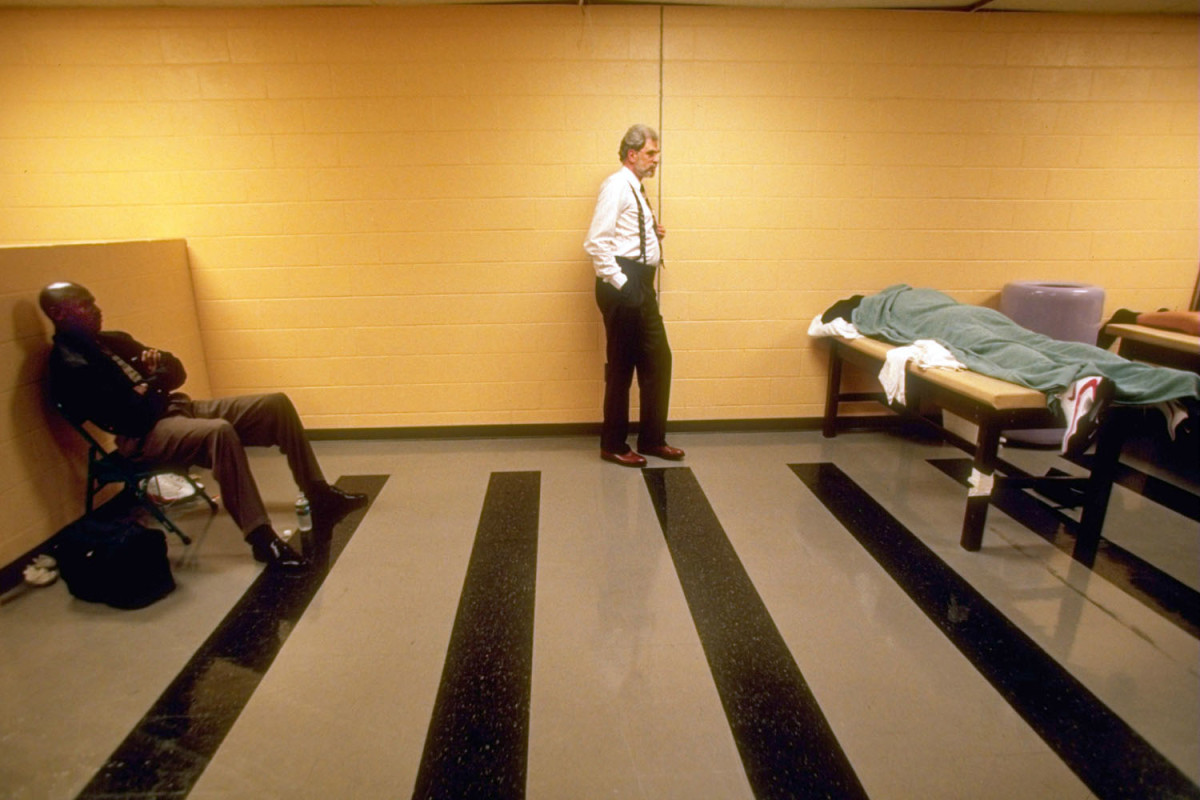
Michael Jordan (L) sitting in the trainer's room with coach Phil Jackson (C) while Scottie Pippen (R) is face down on table and suffering from tonsillitis before a game against the Atlanta Hawks in 1998.
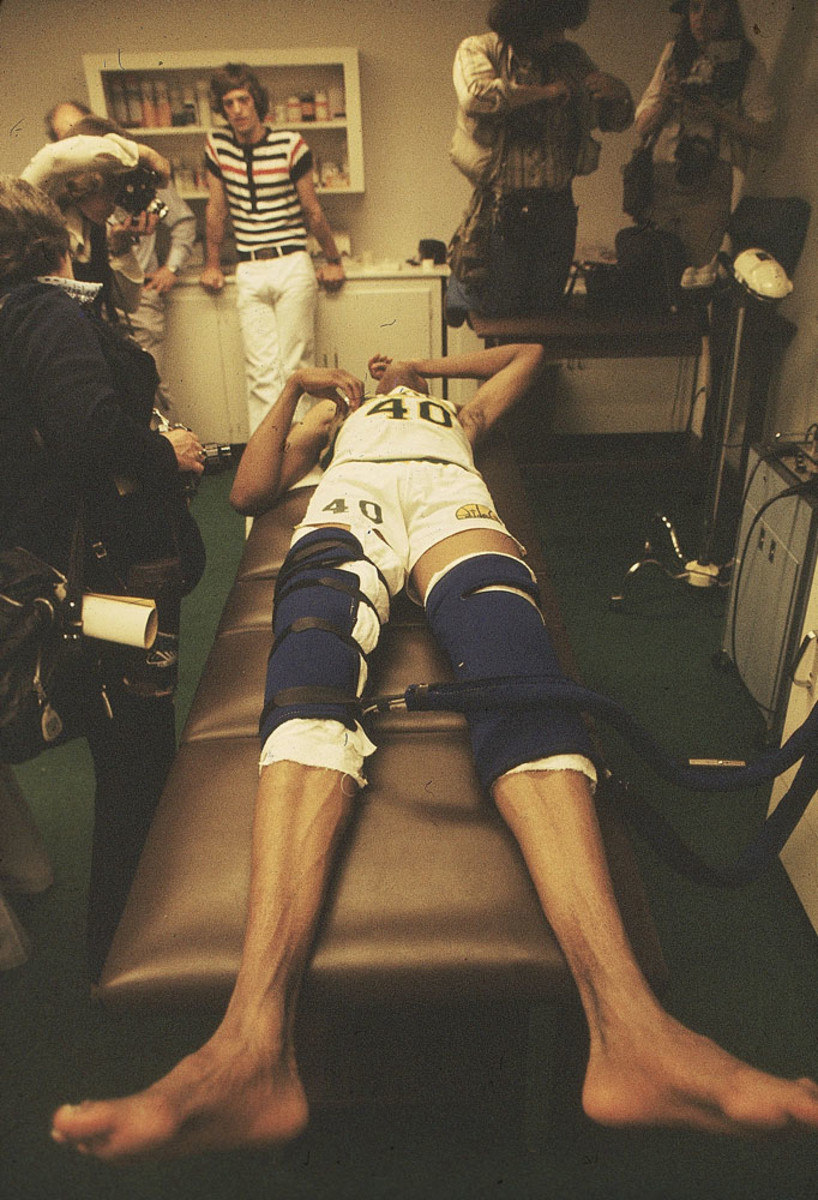
The Seattle SuperSonics' Marvin Webster (40) lying on the trainer's table after losing a game against the Baltimore Bullets in 1978.
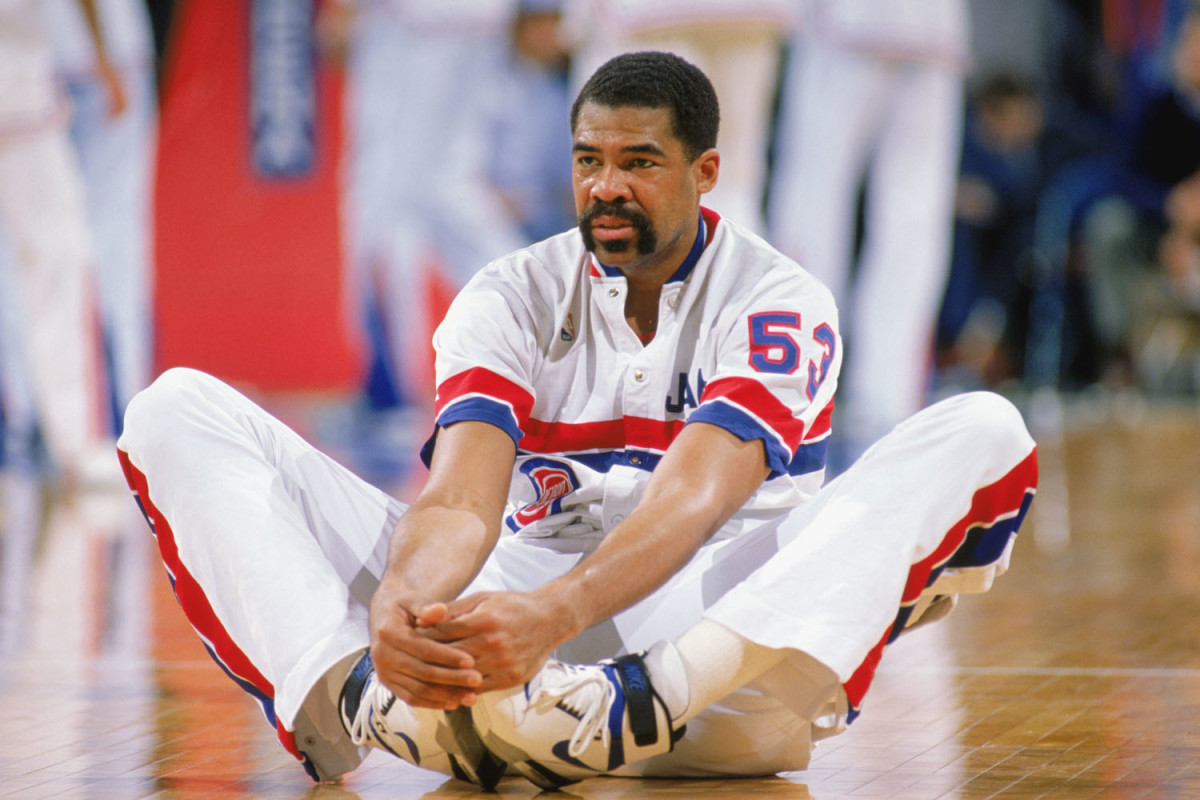
James Edwards stretches his legs before a regular season game in 1989.
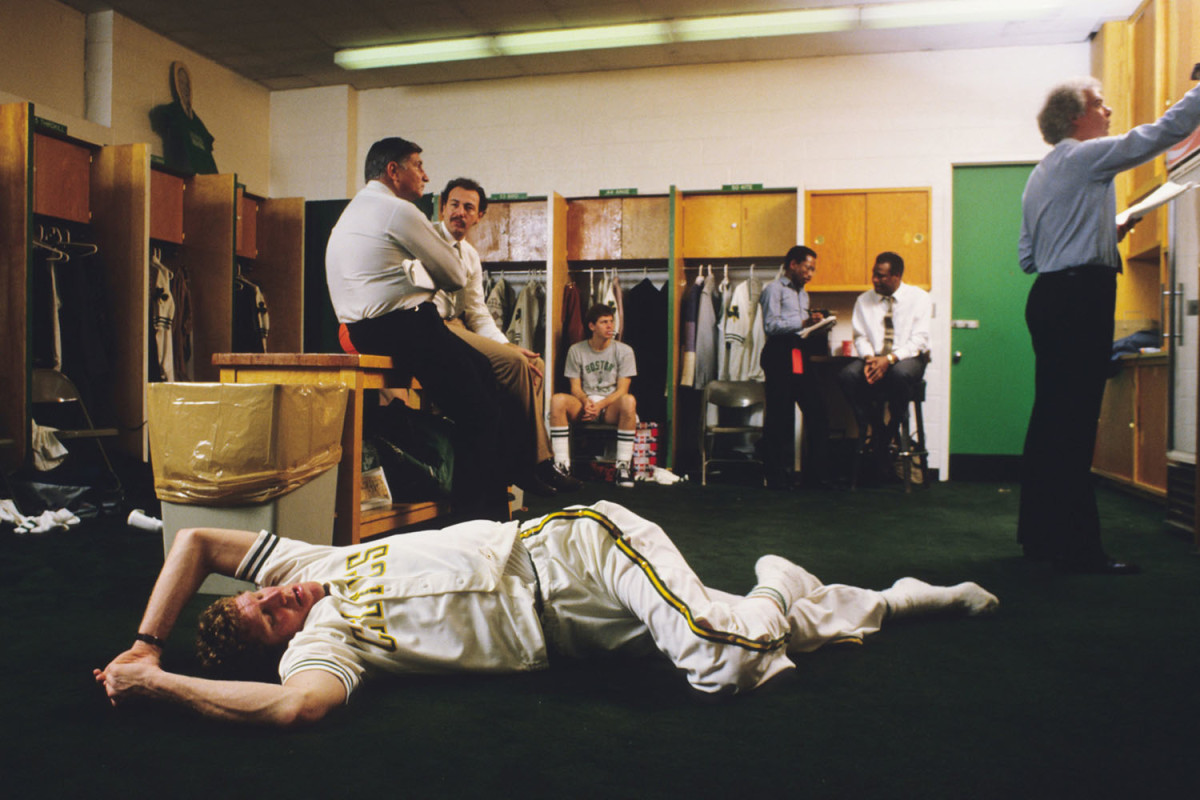
Bill Walton stretches out his back in the locker room before a game on January 22, 1986 in Boston, Massachusetts.
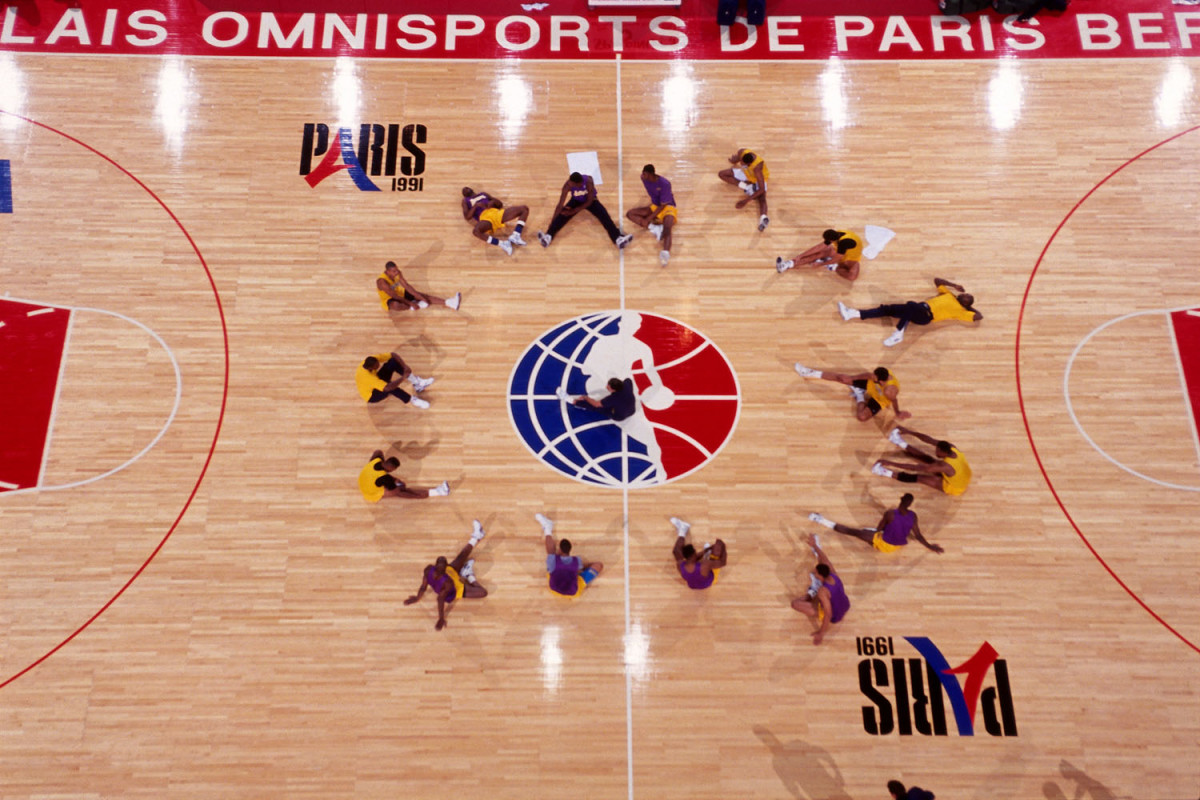
The Los Angeles Lakers practice during the 1991 McDonald's Open on October 14, 1991 at Palais Omnisports de Paris-Bercy in Paris, France.
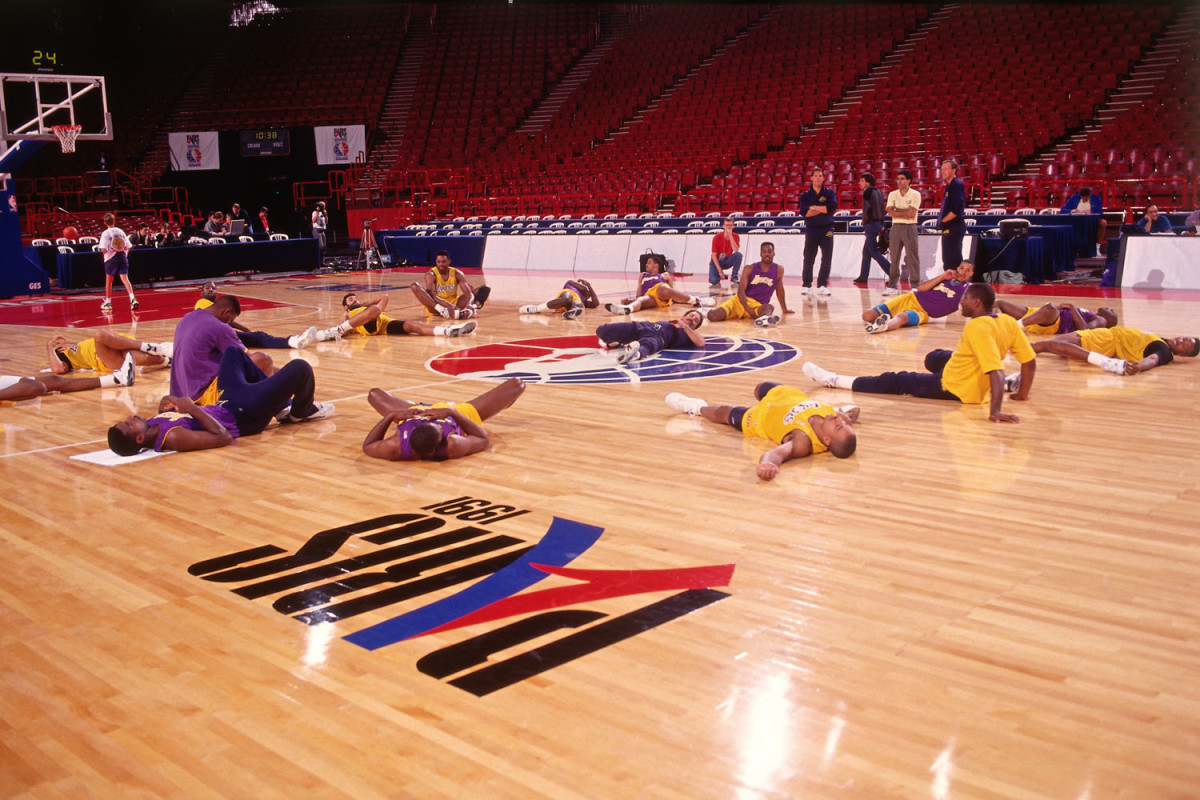
The Los Angeles Lakers practice during the 1991 McDonald's Open on October 14, 1991 at Palais Omnisports de Paris-Bercy in Paris, France.
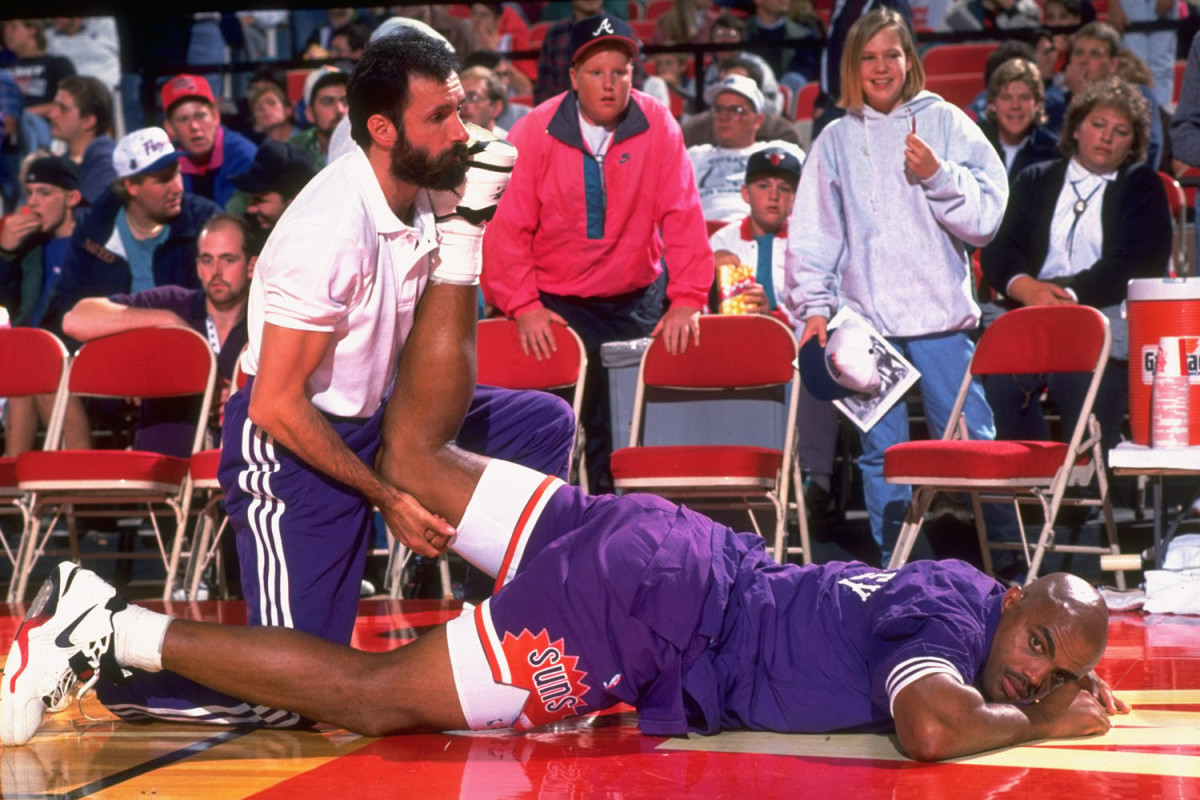
Charles Barkley gets worked on by team trainers on the sidelines during a game against the Milwaukee Bucks.
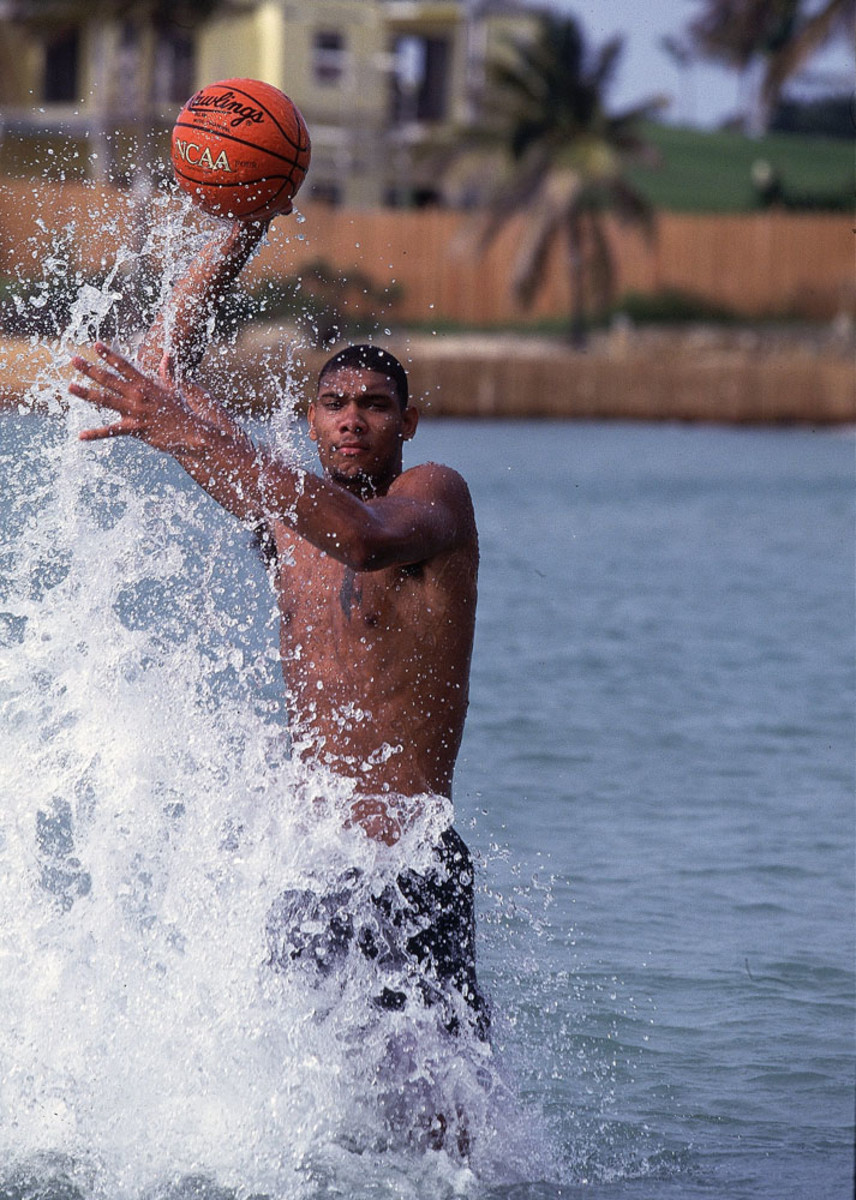
Tim Duncan getting in some exercise in the U.S. Virgin Islands the summer before beginning his sophomore year at Wake Forest University in 1995.
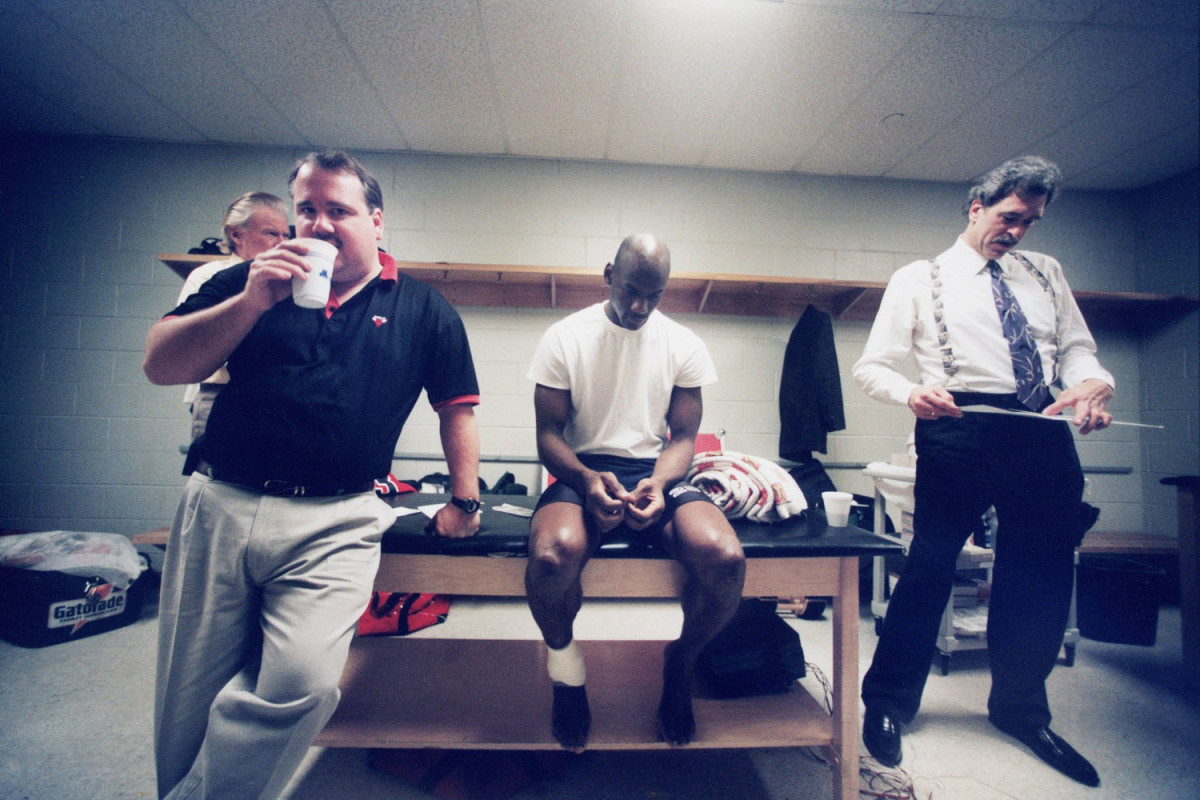
Michael Jordan along with head coach Phil Jackson with the Bulls' trainer in locker room in 1993.
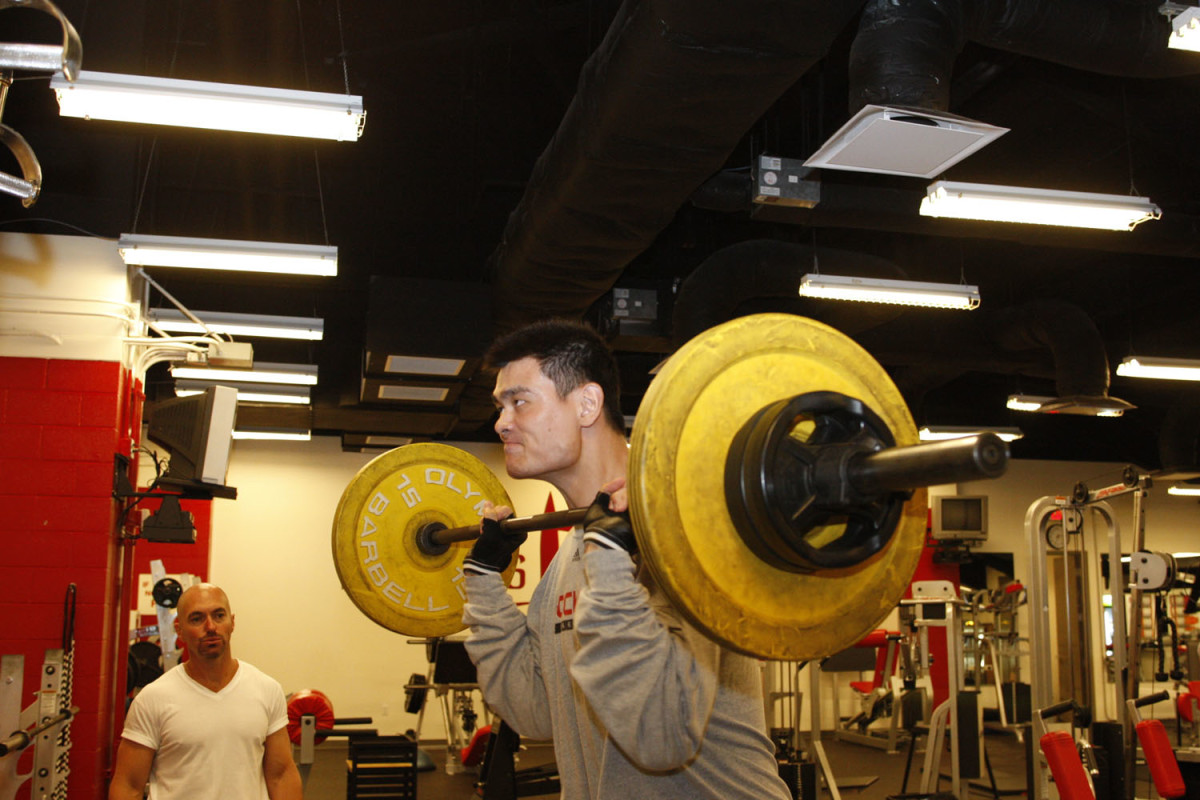
Yao Ming lifting weights during workout in gym at Toyota Center in Houston, Texas in 2007.
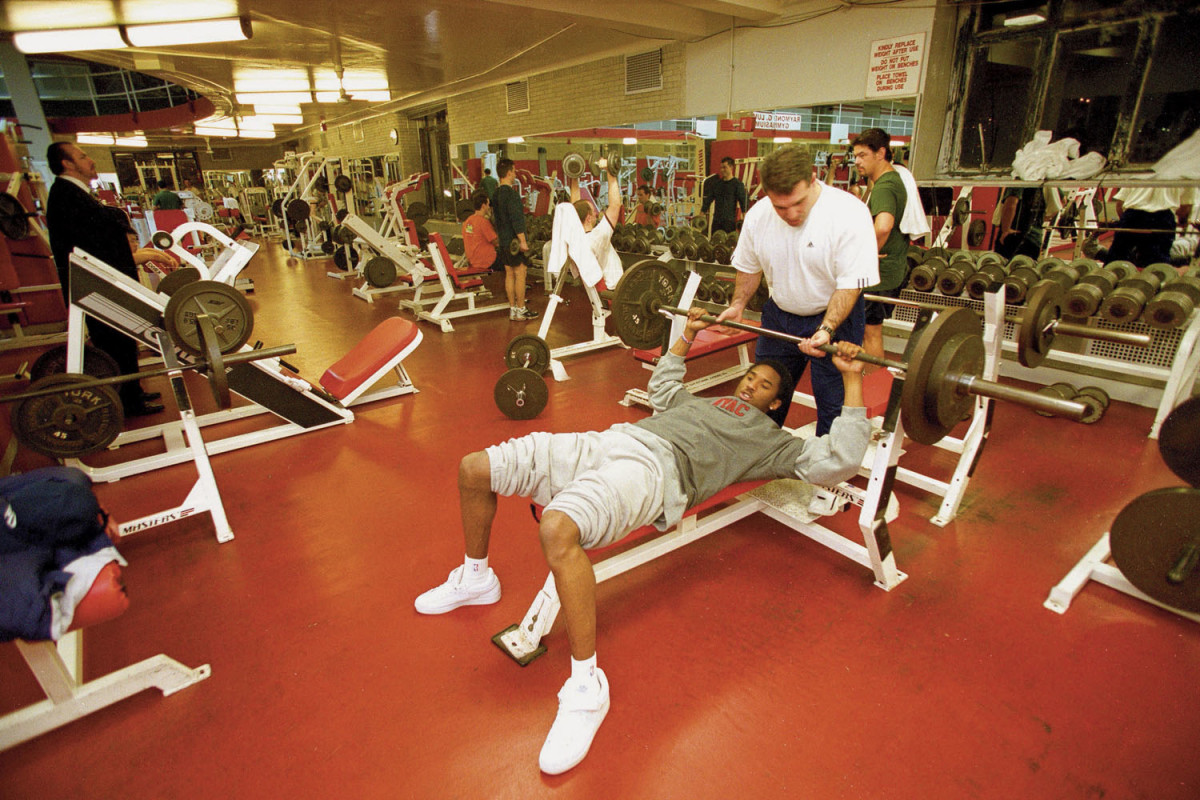
Los Angeles Lakers Kobe Bryant in action, lifting weights with his trainer at the New York Athletic Club in 2002.
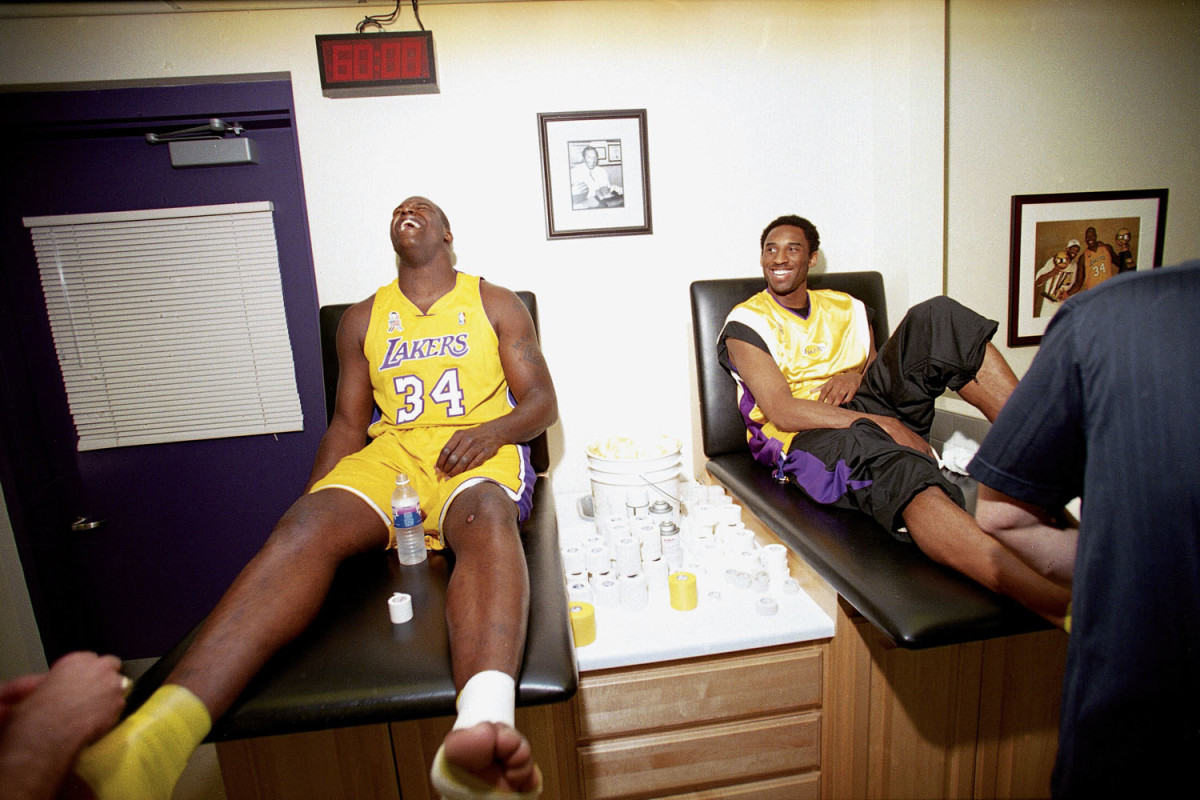
Shaquille O'Neal and Kobe Bryant with trainer before a home game in Los Angeles in 2002.
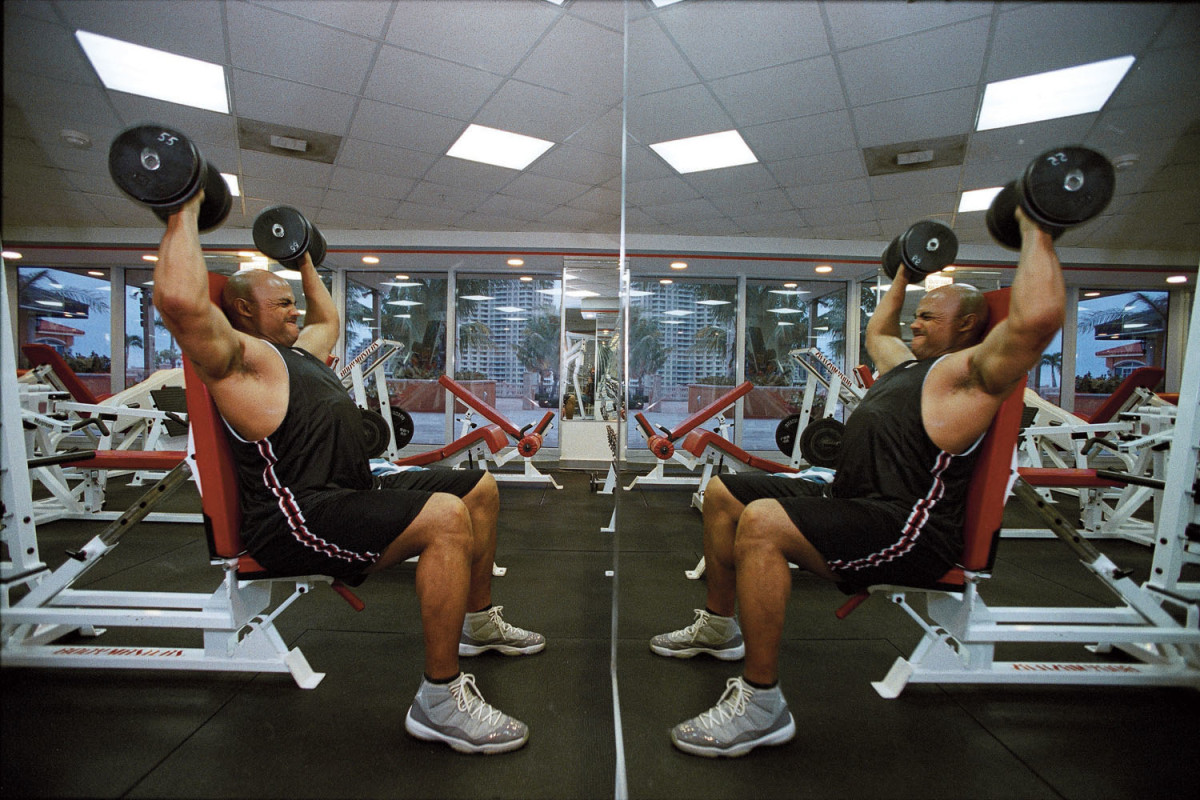
Former NBA star and TNT announcer Charles Barkley lifting weights at hotel gym in Miami, Florida in 2002.
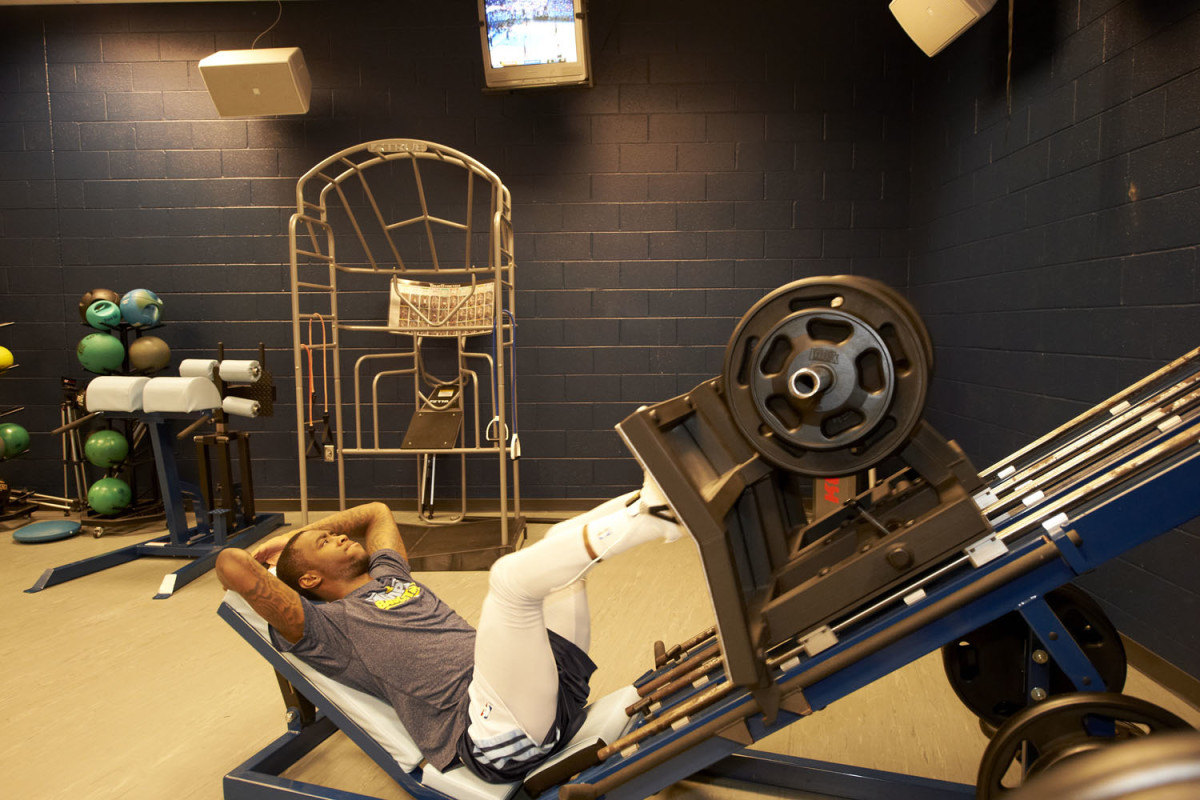
Memphis Grizzlies gaurd Tony Wroten lifting weights before a game against the Oklahoma City Thunder at FedEx Forum in 2013.
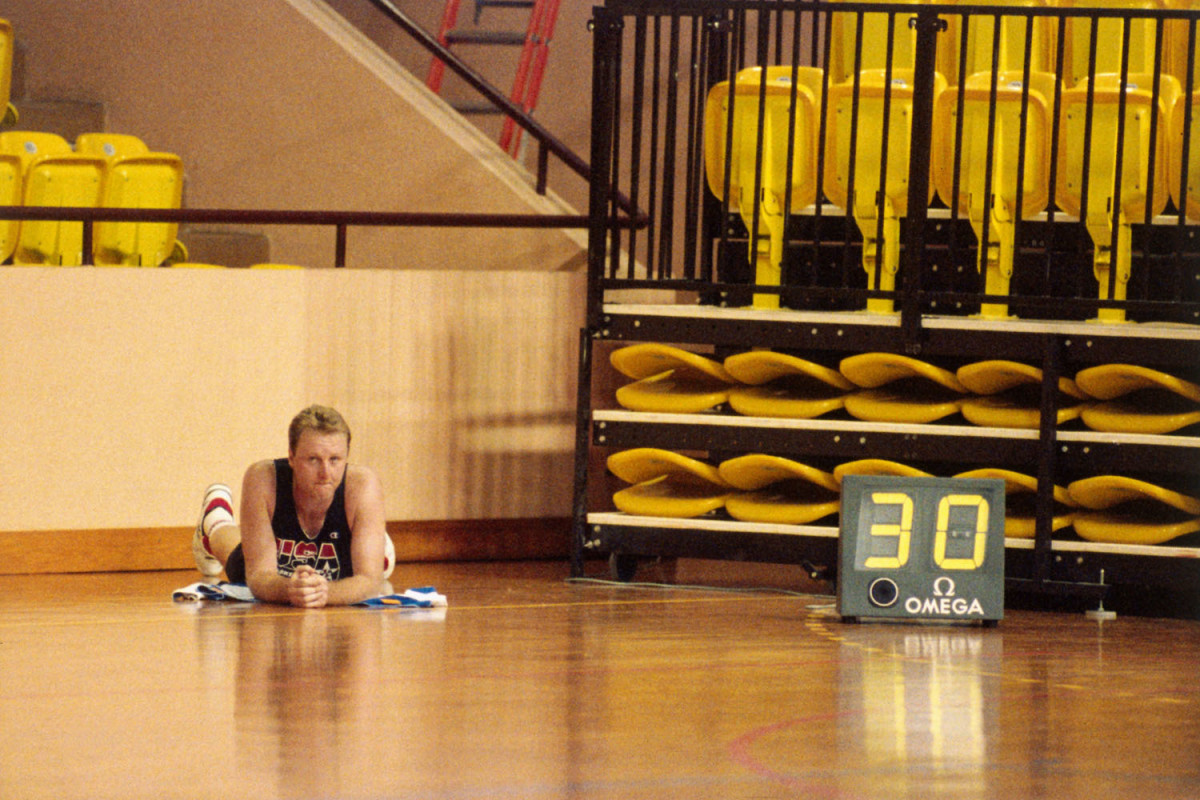
NBA Dream Teamer Larry Bird lies on the court resting his back during a practice in June 1992 in Monte Carlo.
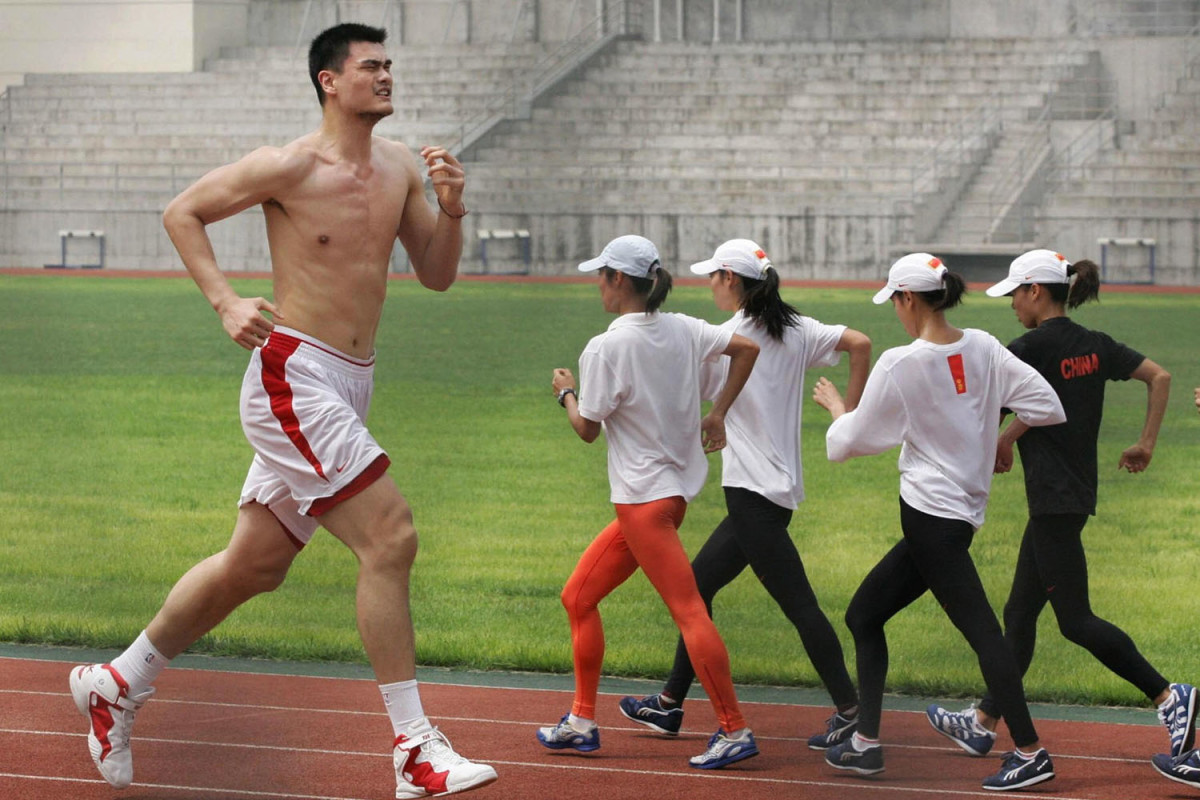
Yao Ming runs around a track during a training session in Beijing for the upcoming World Basketball Championships which begin in Japan in 2006.
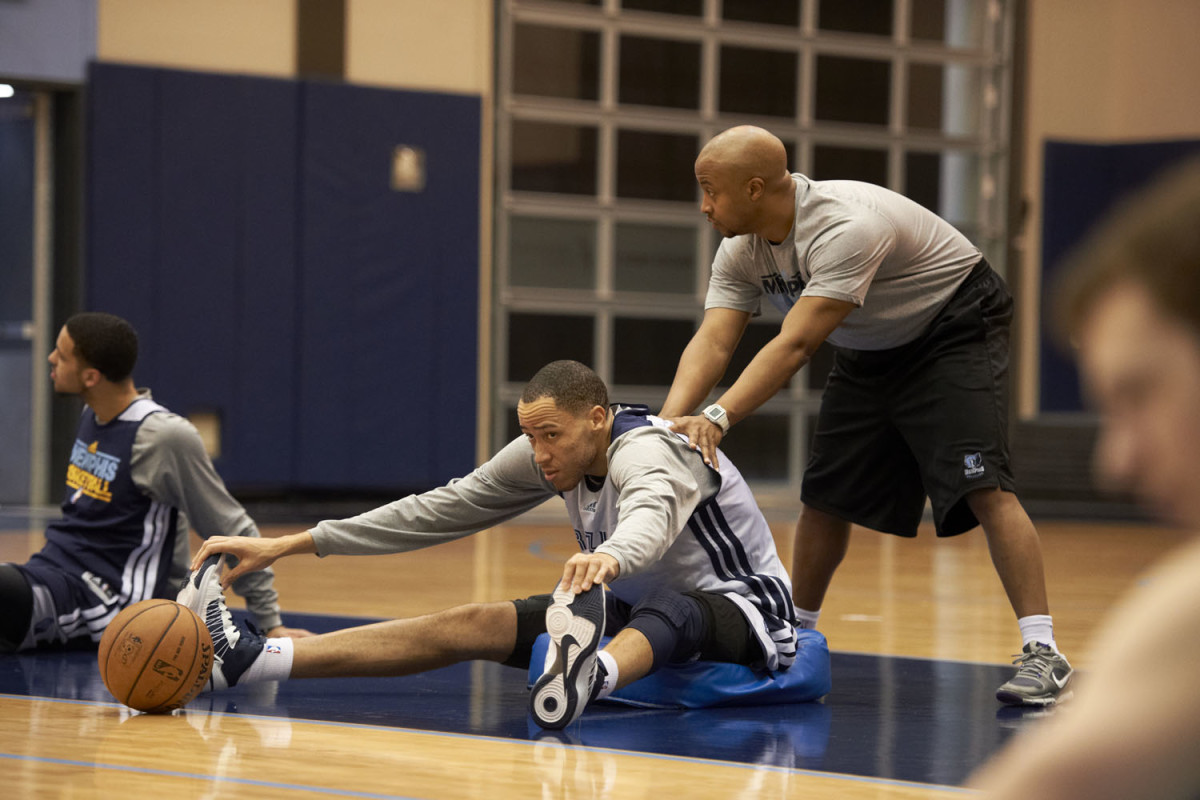
Tayshaun Prince works with strength and conditioning coach Kelly Lambert before practice at Methodist Healthcare Practice Facility in 2013.
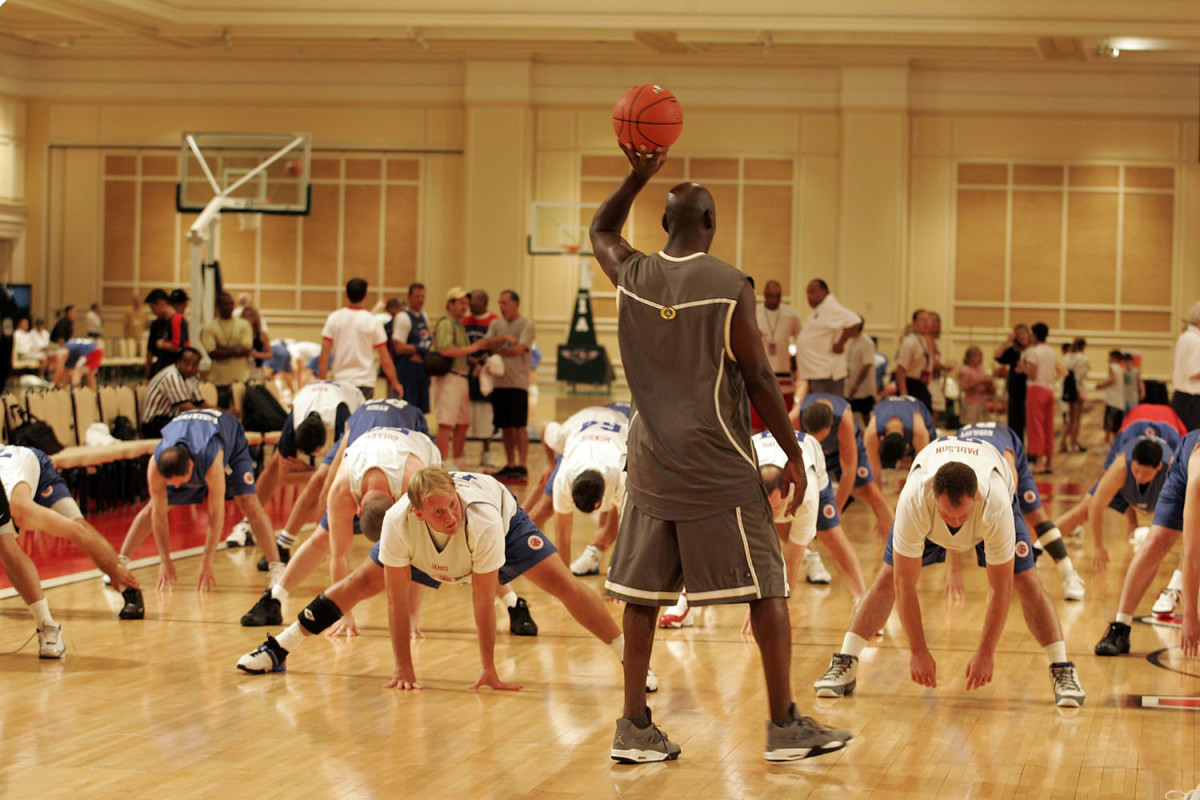
Former NBA superstar Michael Jordan talks with "campers" who are stretching out prior to practice at the Michael Jordan Senior Flight School at The Mirage Hotel and Convention Center in Las Vegas in 2004.
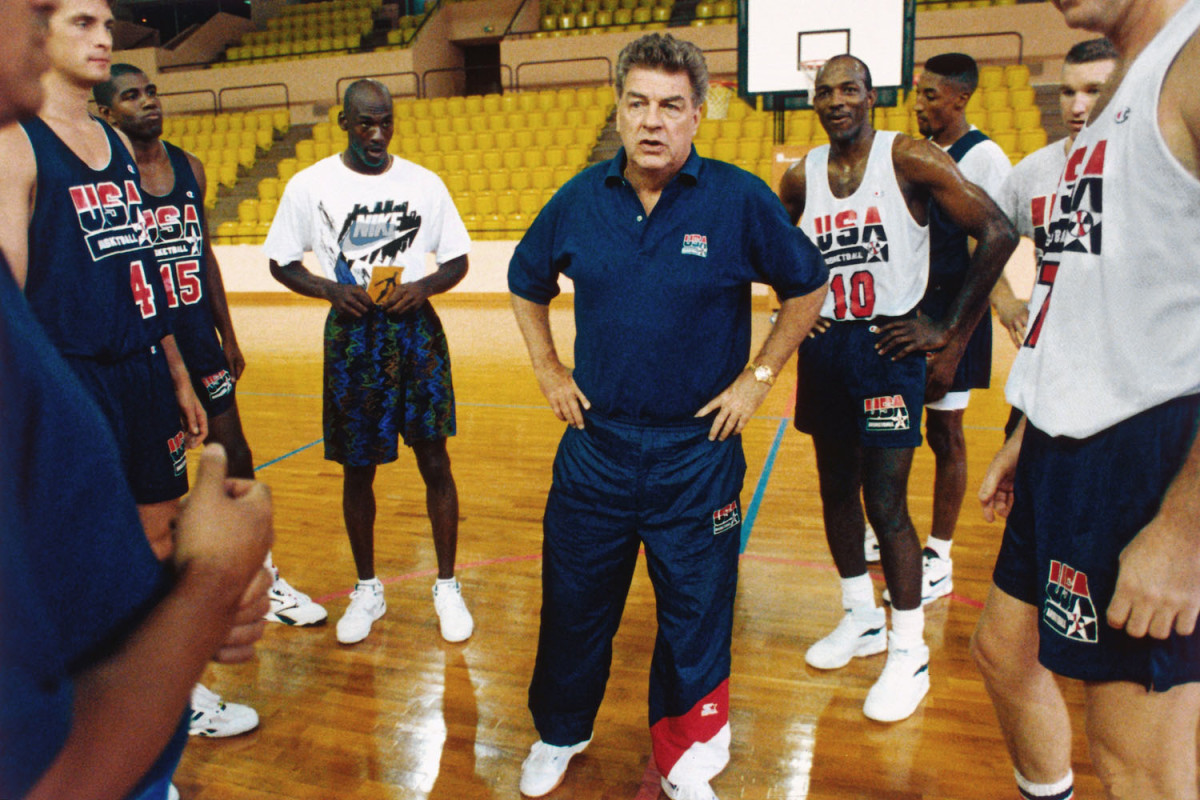
United States National Team head coach Chuck Daly talks to his team during a practice in June 1992 in La Jolla, California.
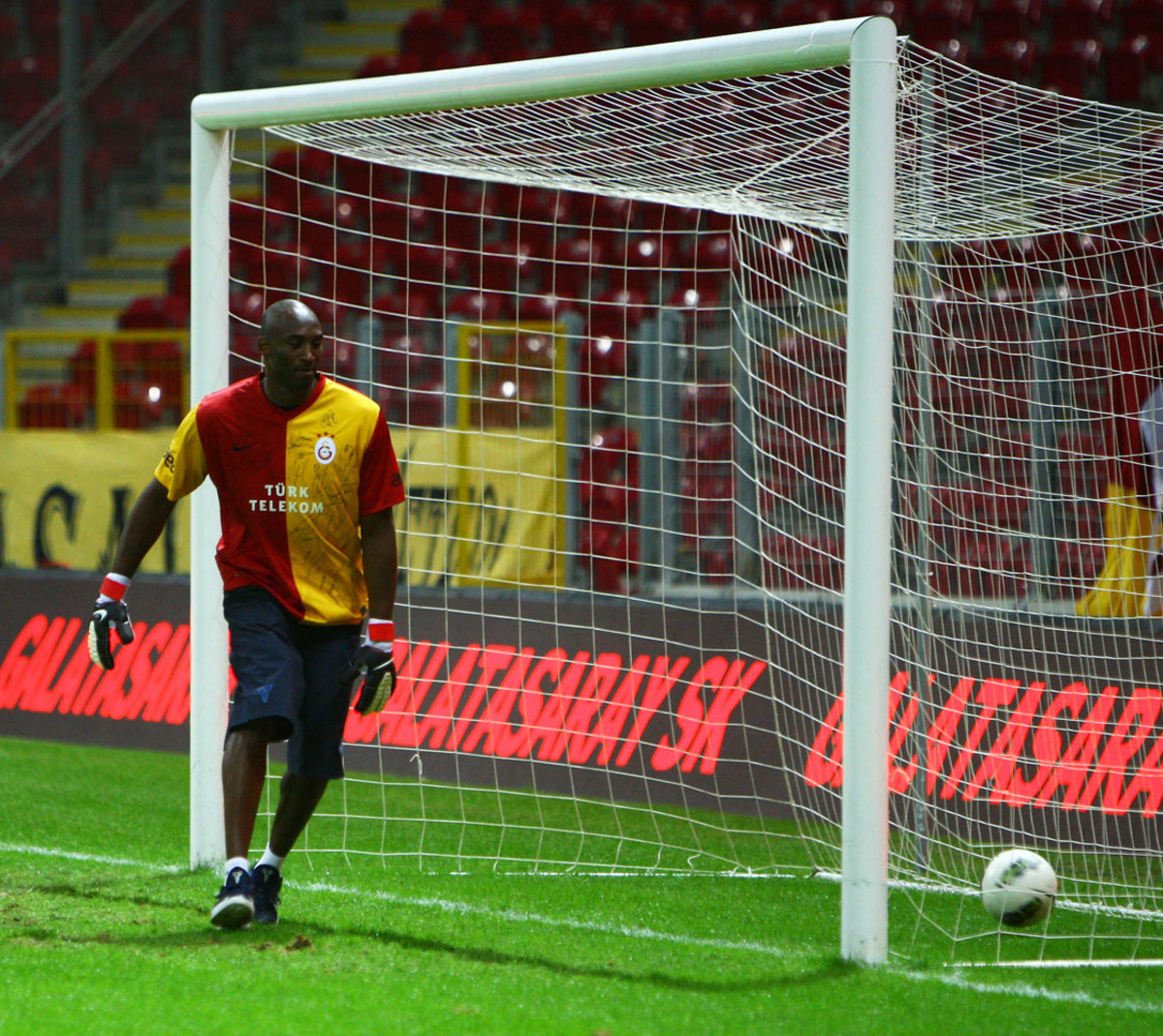
NBA basketball player Kobe Bryant during Galatasaray Football team training at the Turk Telekom Arena Stadium in Istanbul, Turkey in 2011.
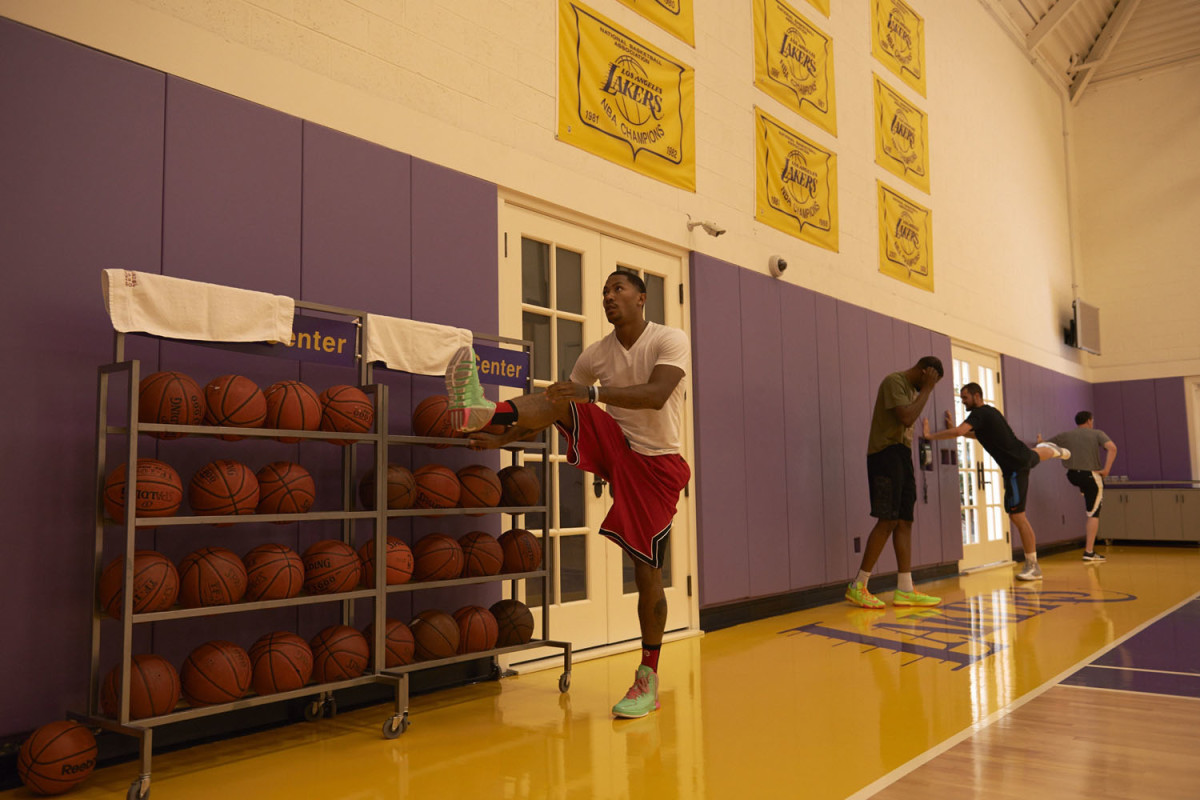
Derek Rose stretching before a practice session at the Toyota Sports Center with NBA trainer Rob McClanaghan.
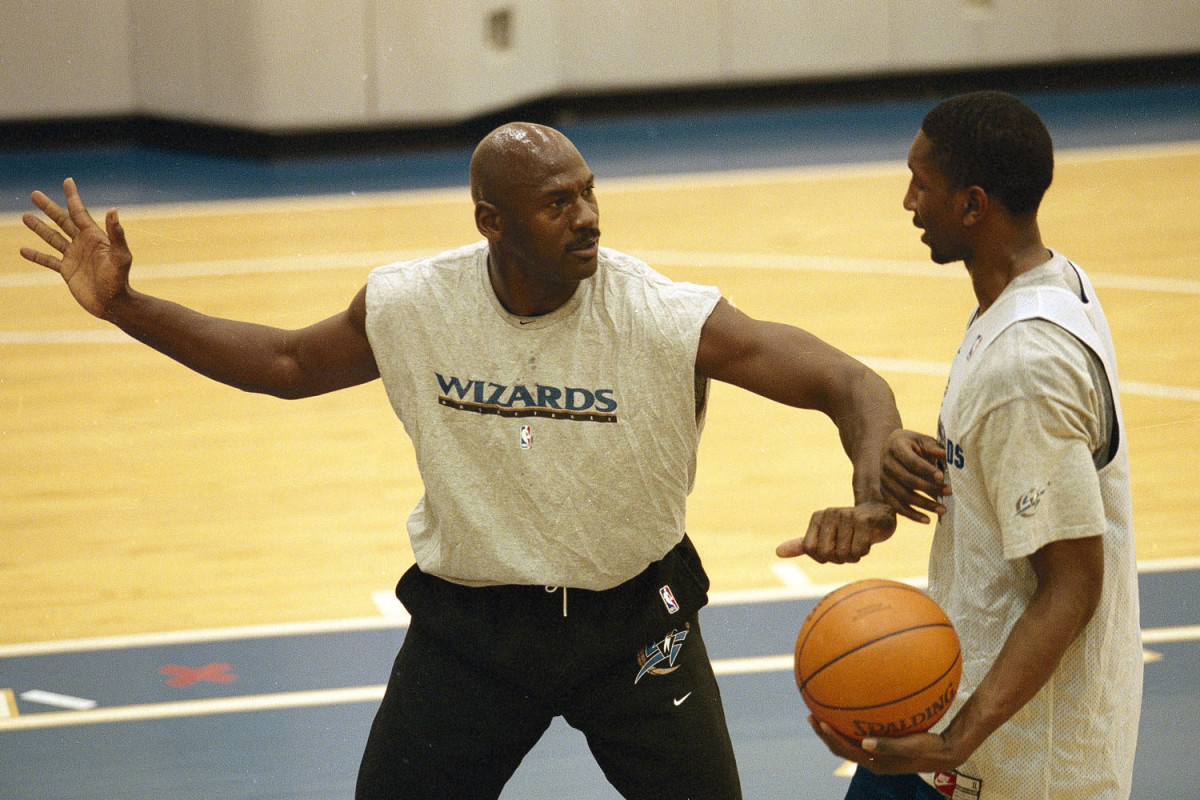
Washington Wizards executive Michael Jordan giving some advice to players during practice in 2000.
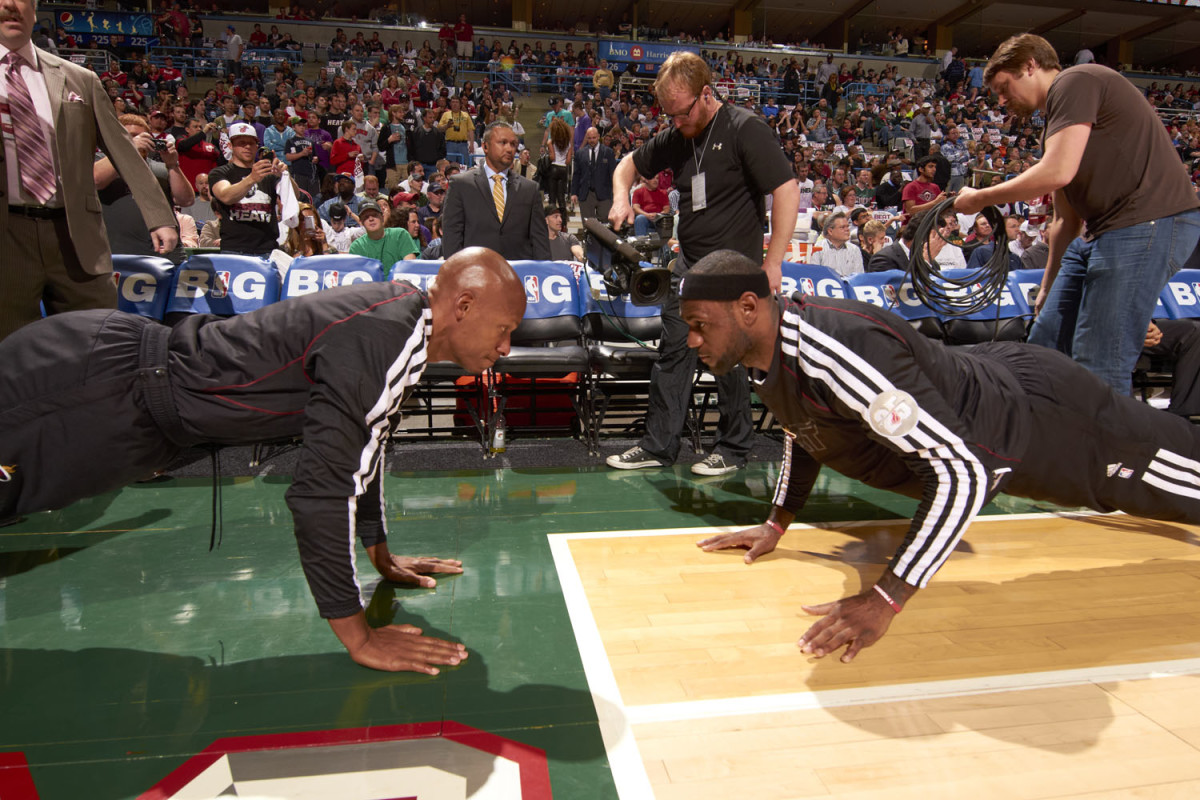
The Miami Heat's LeBron James (R) stretching with Ray Allen (L) before a game against the Milwaukee Bucks at the Bradley Center in 2013.
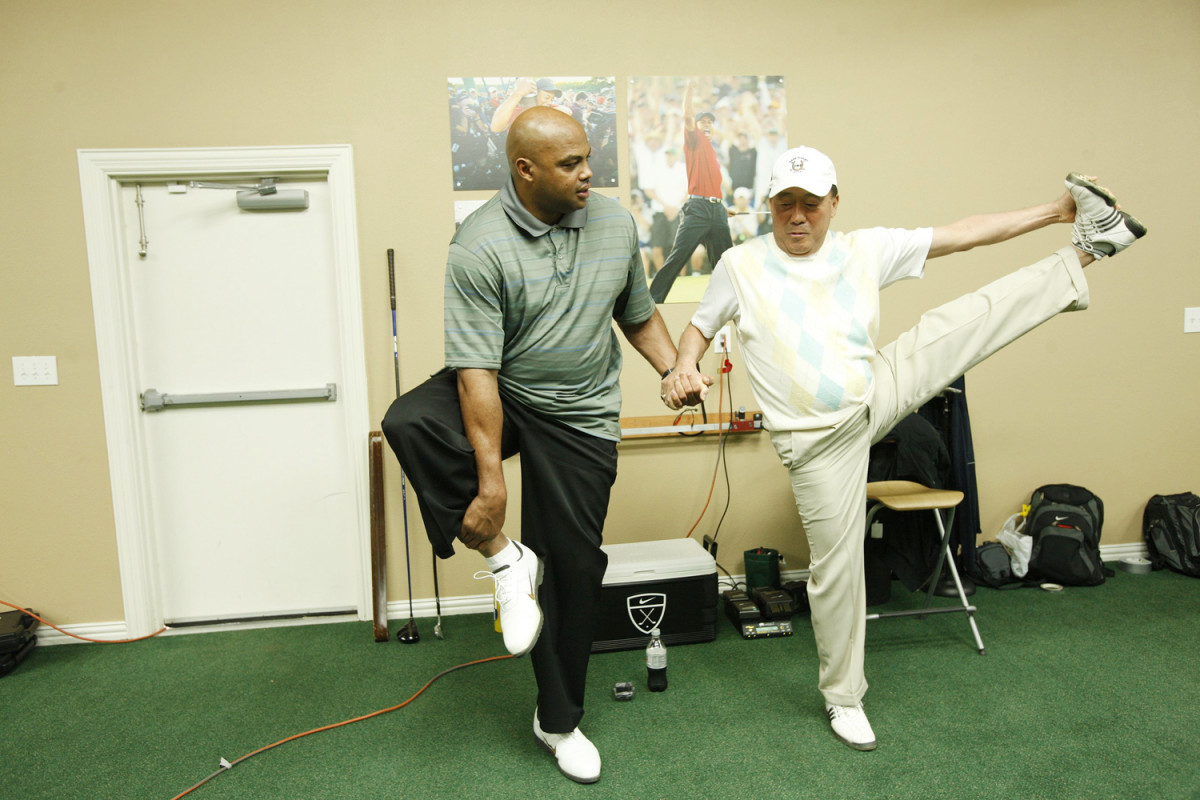
NBA on TNT announcer and former NBA basketball player Charles Barkley stretching with golf instructor Suckki Jang during taping for the Golf Channel's reality TV show The Haney Project at Hank Haney Golf Ranch at Vista Ridge.
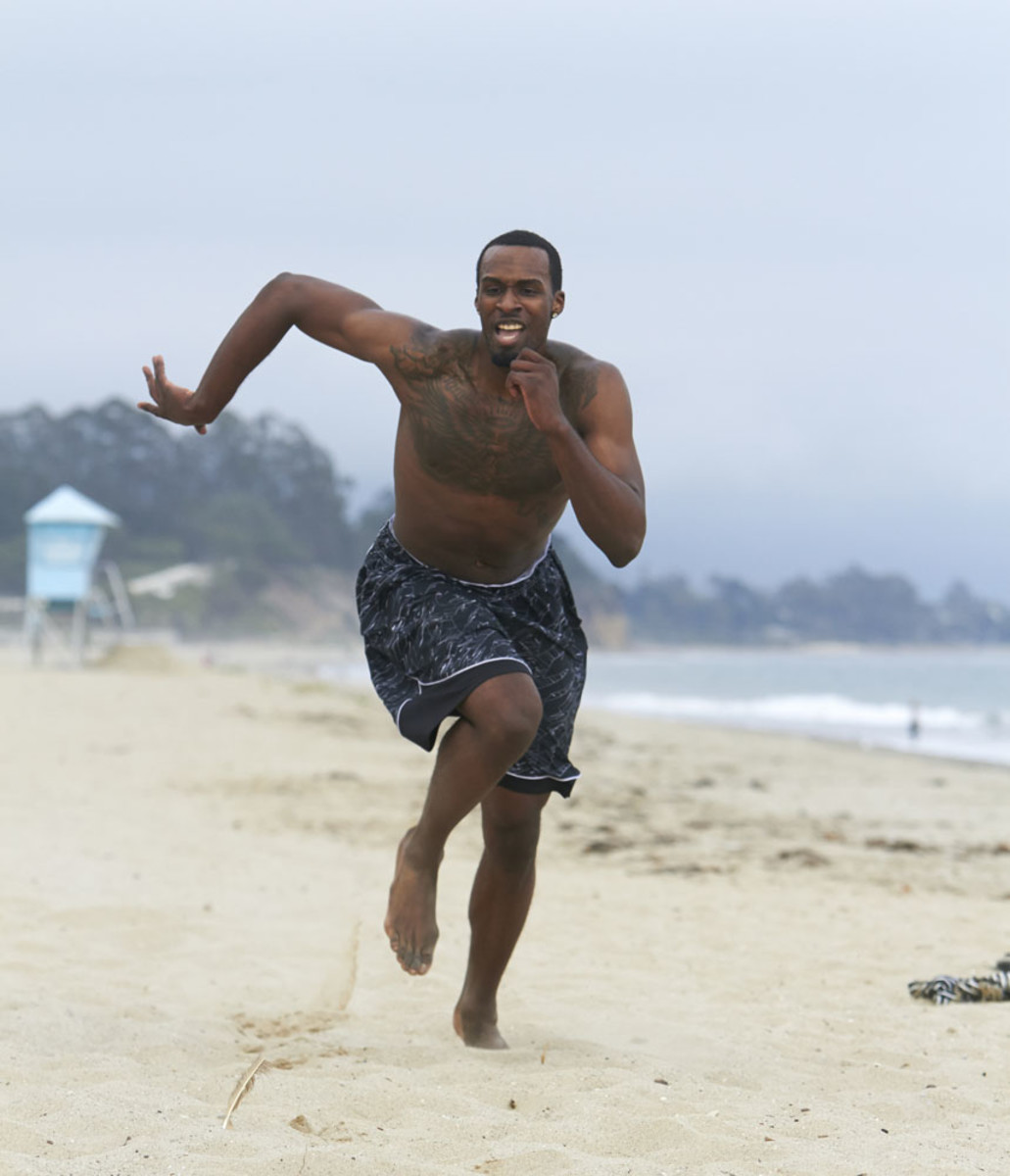
Former UCLA guard/forward Shabazz Muhammad in action during training session at East Beach in Santa Barbara, California in 2013.
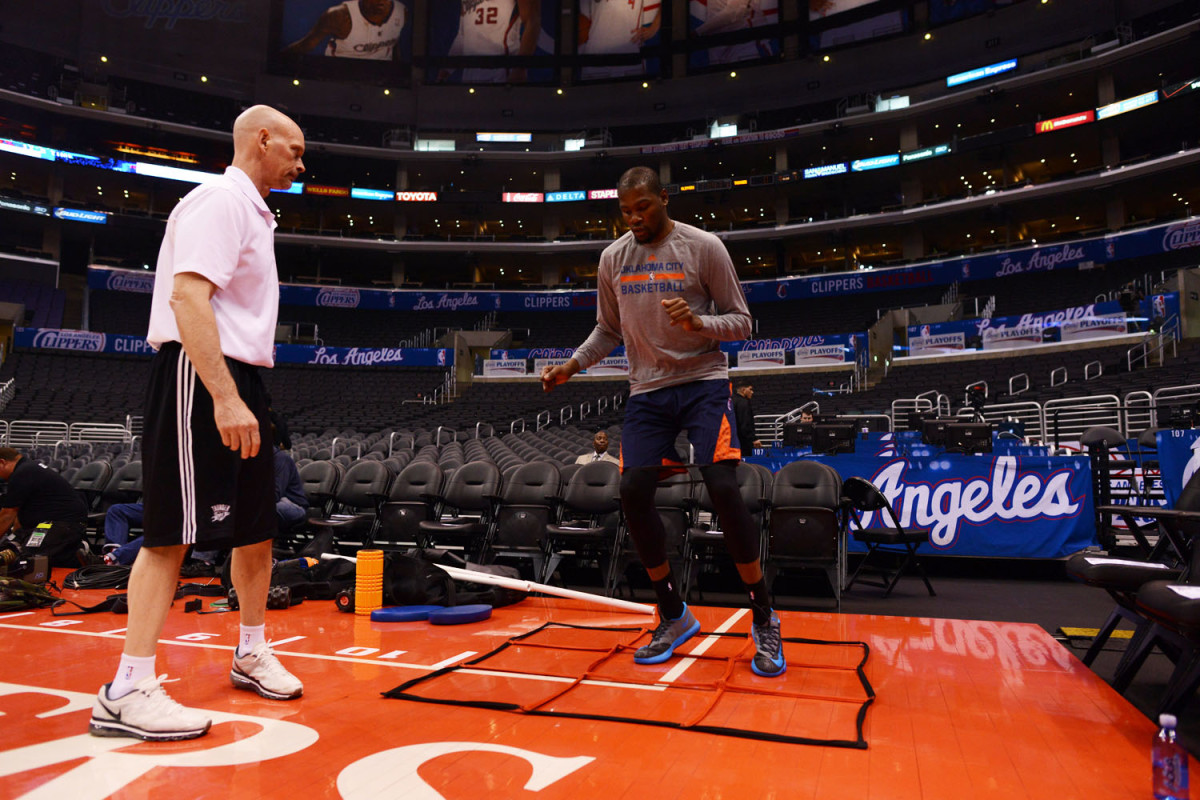
Kevin Durant works out before a game against the Los Angeles Clippers in the 2014 NBA Playoffs.
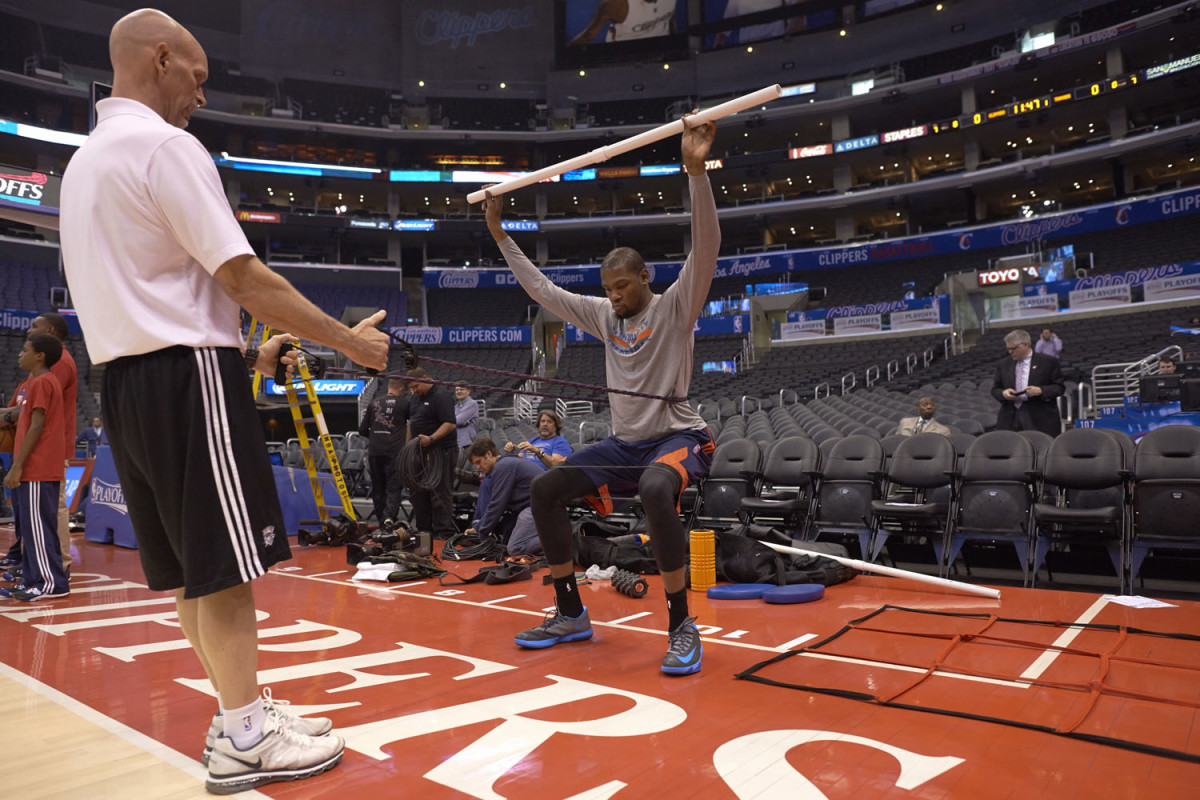
Kevin Durant works out before a game against the Los Angeles Clippers in the 2014 NBA Playoffs.
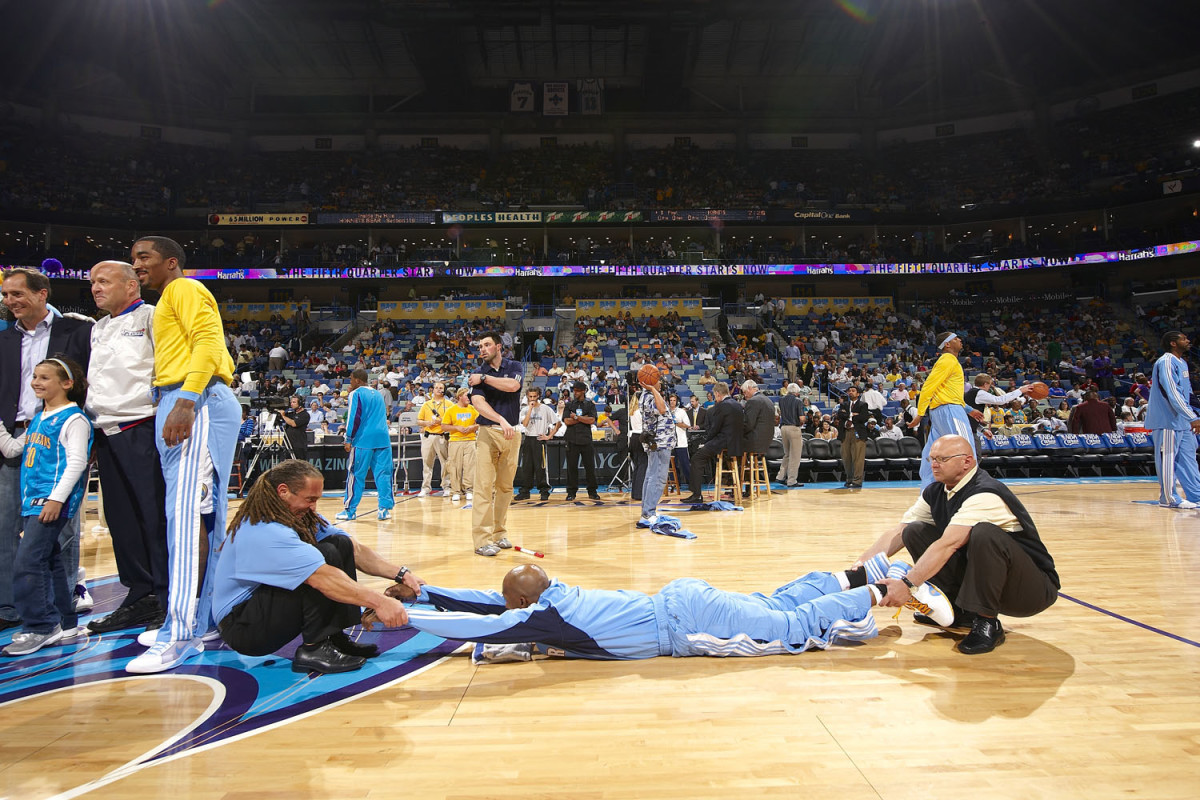
Denver's Chauncey Billups being stretched out by trainers before a game against the New Orleans Hornets in 2009.
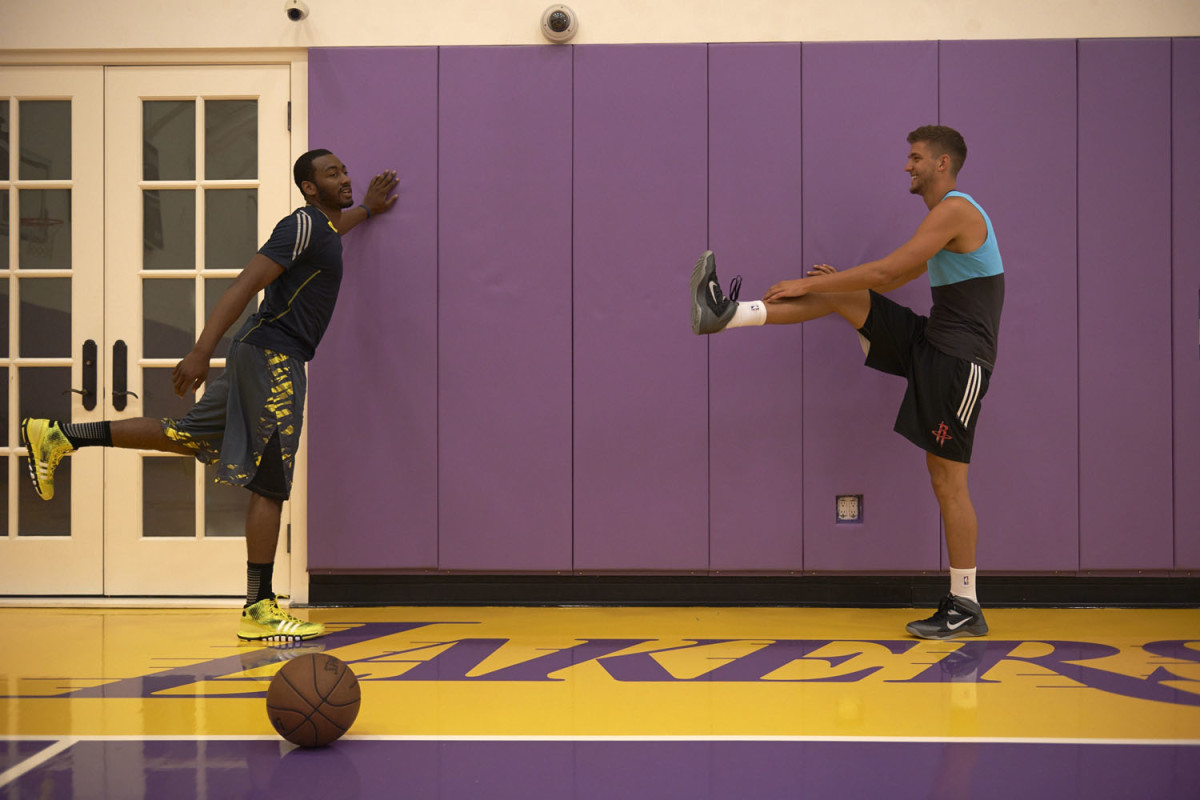
Washington Wizards guard John Wall (L) and Houston Rockets forward Chandler Parsons stretching before a practice session with professional basketball trainer Rob McClanaghan.
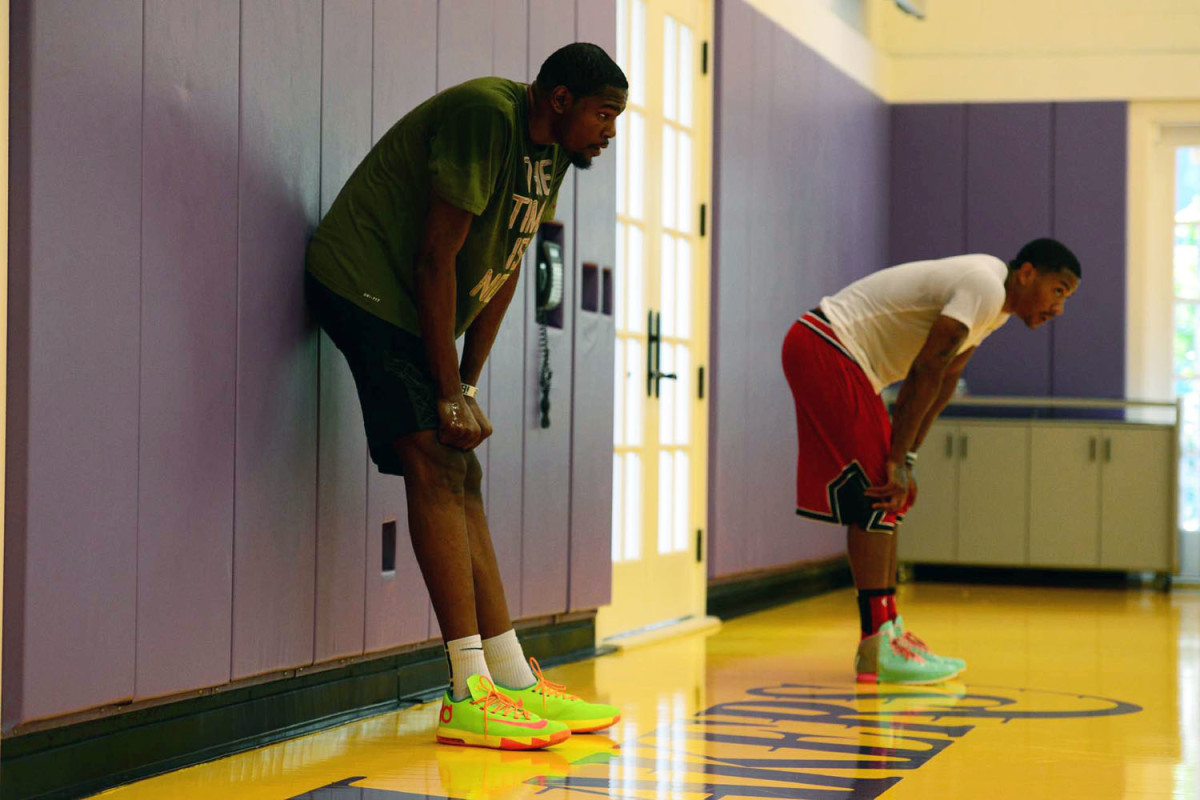
Kevin Durant and Derrick Rose take a breather during a training session with NBA trainer Rob McClanaghan.
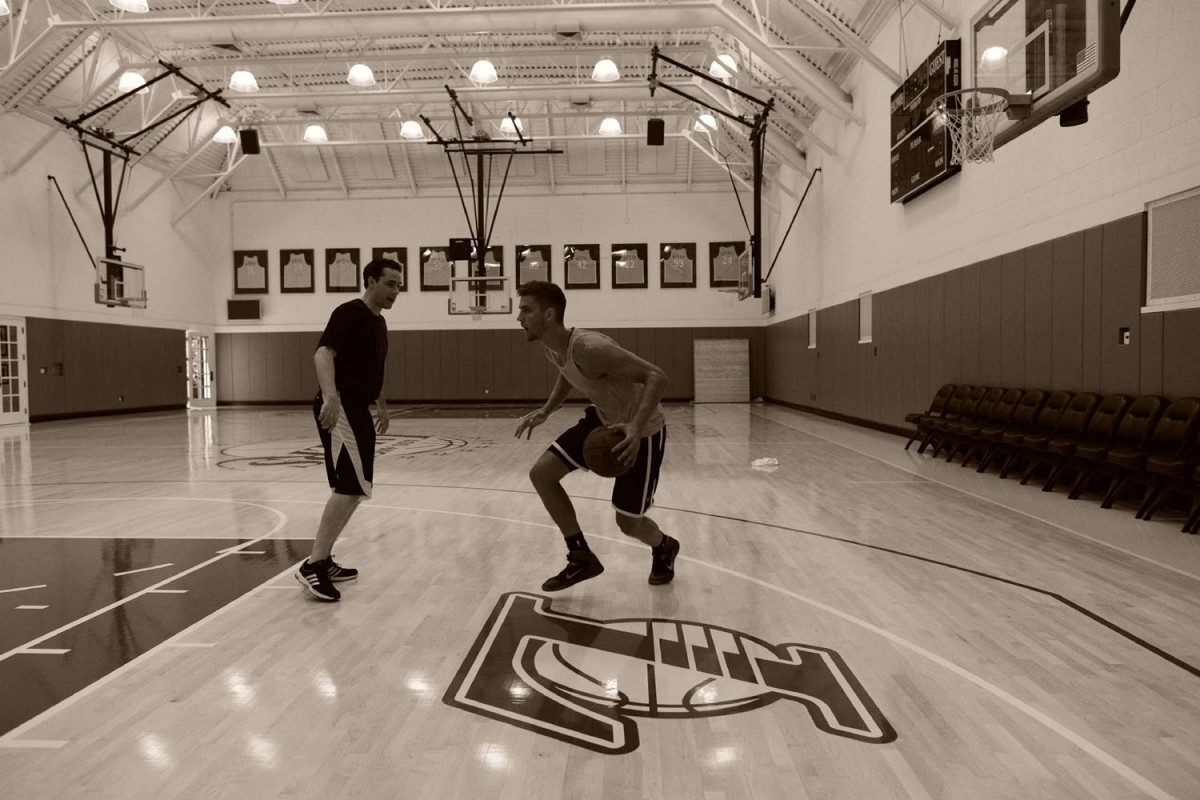
Chandler Parsons working out with NBA trainer Rob McClanaghan in Los Angeles.
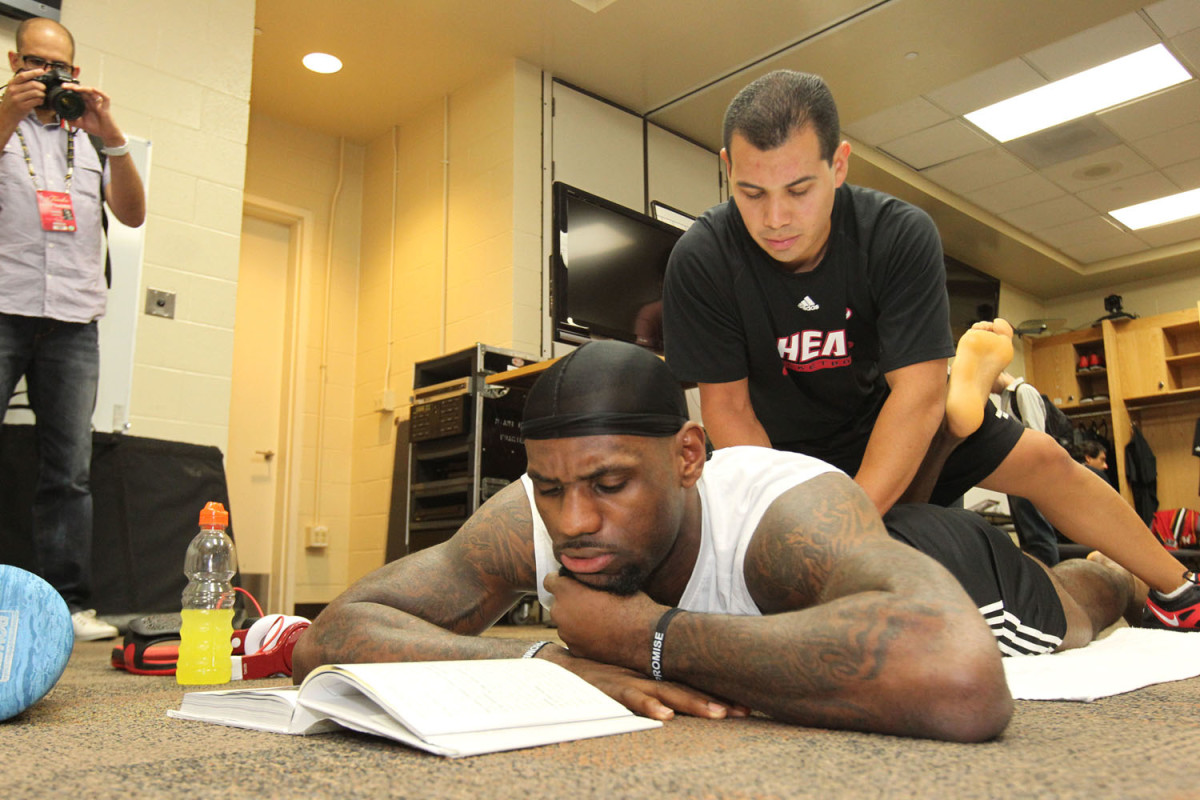
LeBron James gets stretched out in the locker room prior to Game 1 of the 2012 NBA Finals against Oklahoma City Thunder at the Chesapeake Energy Arena on June 12, 2012 in Oklahoma City, Oklahoma.
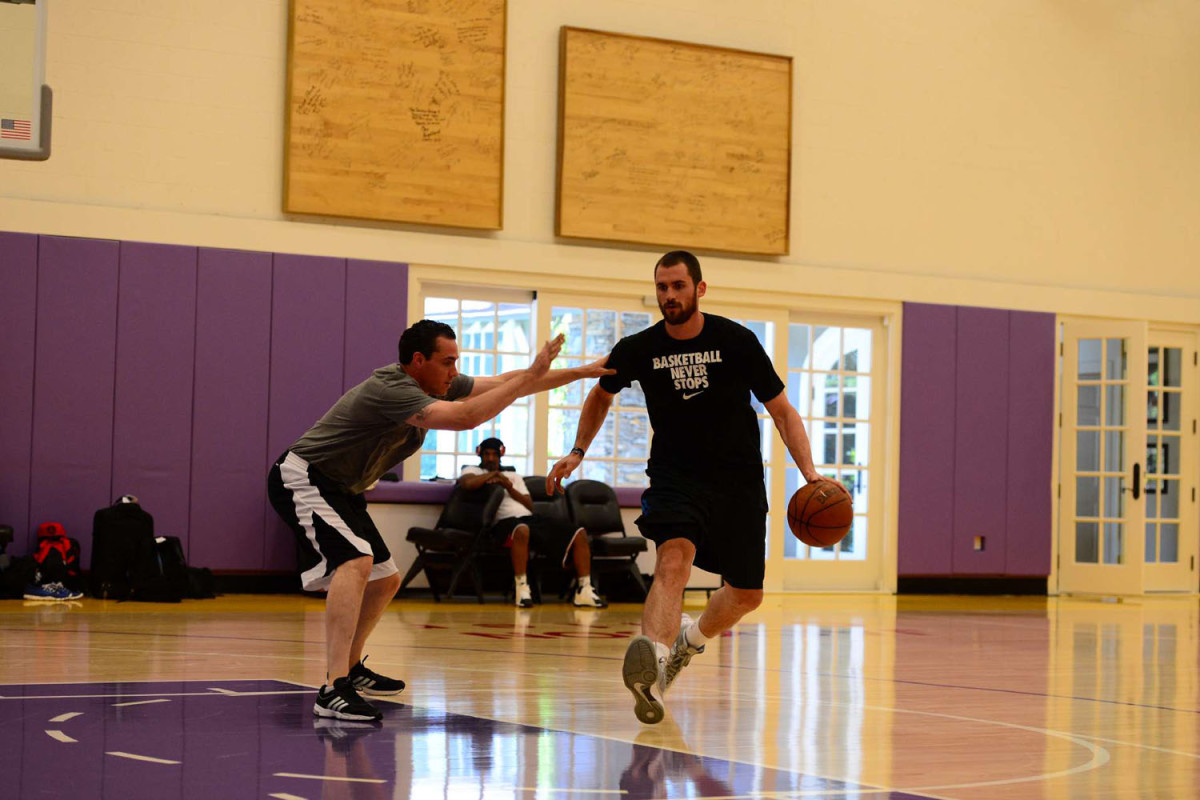
Kevin Love working out with NBA trainer Rob McClanaghan in Los Angeles.
